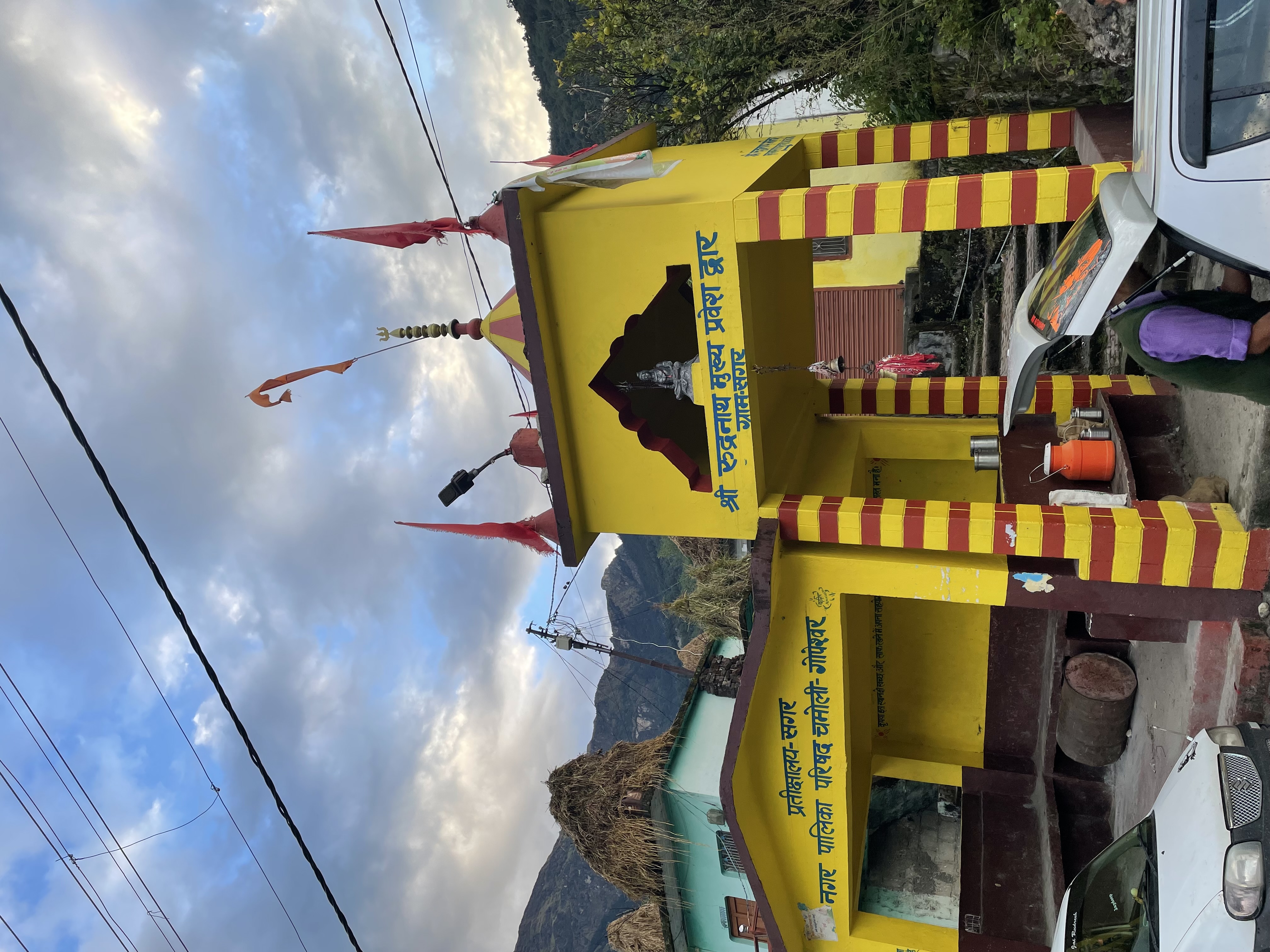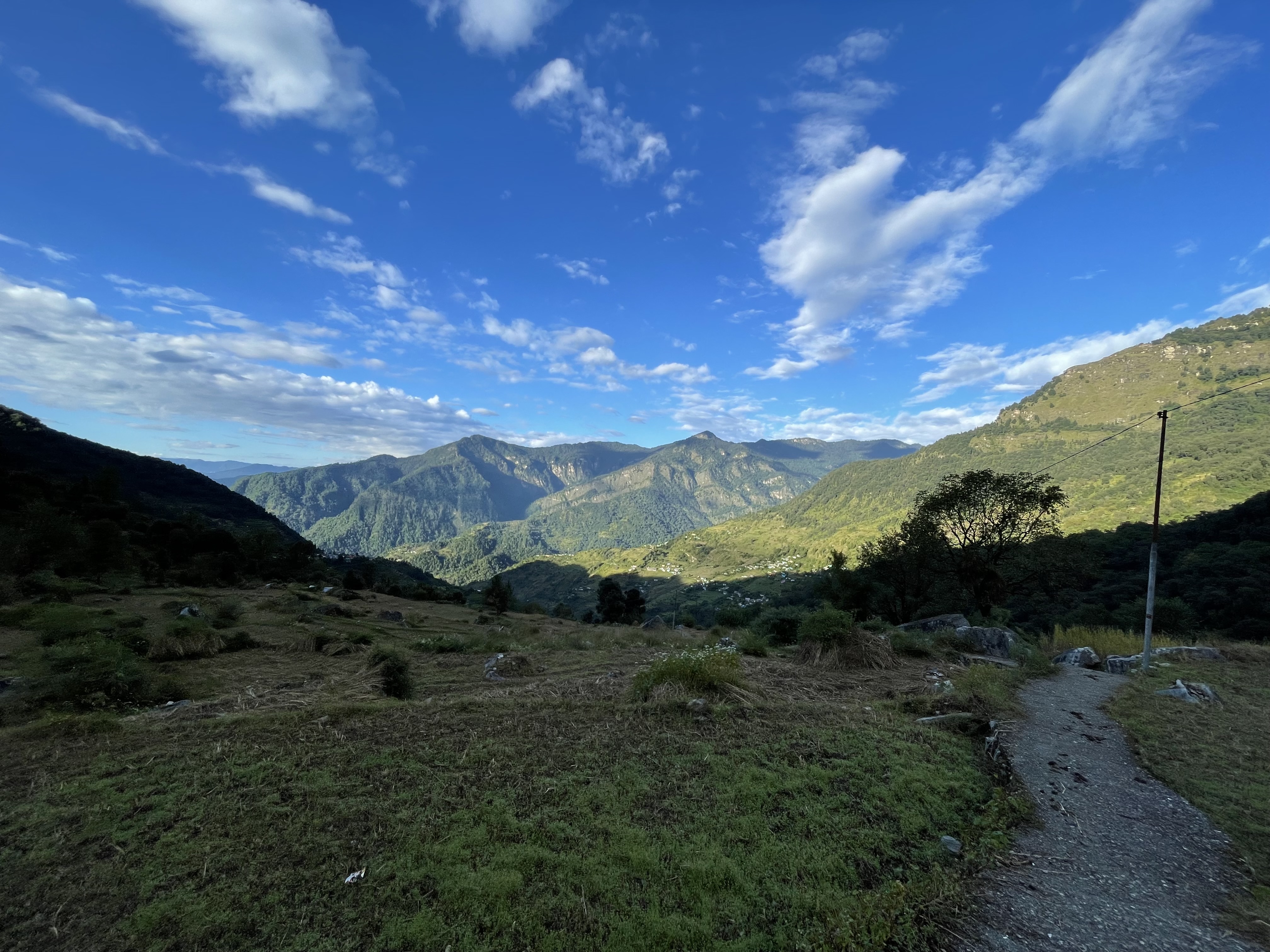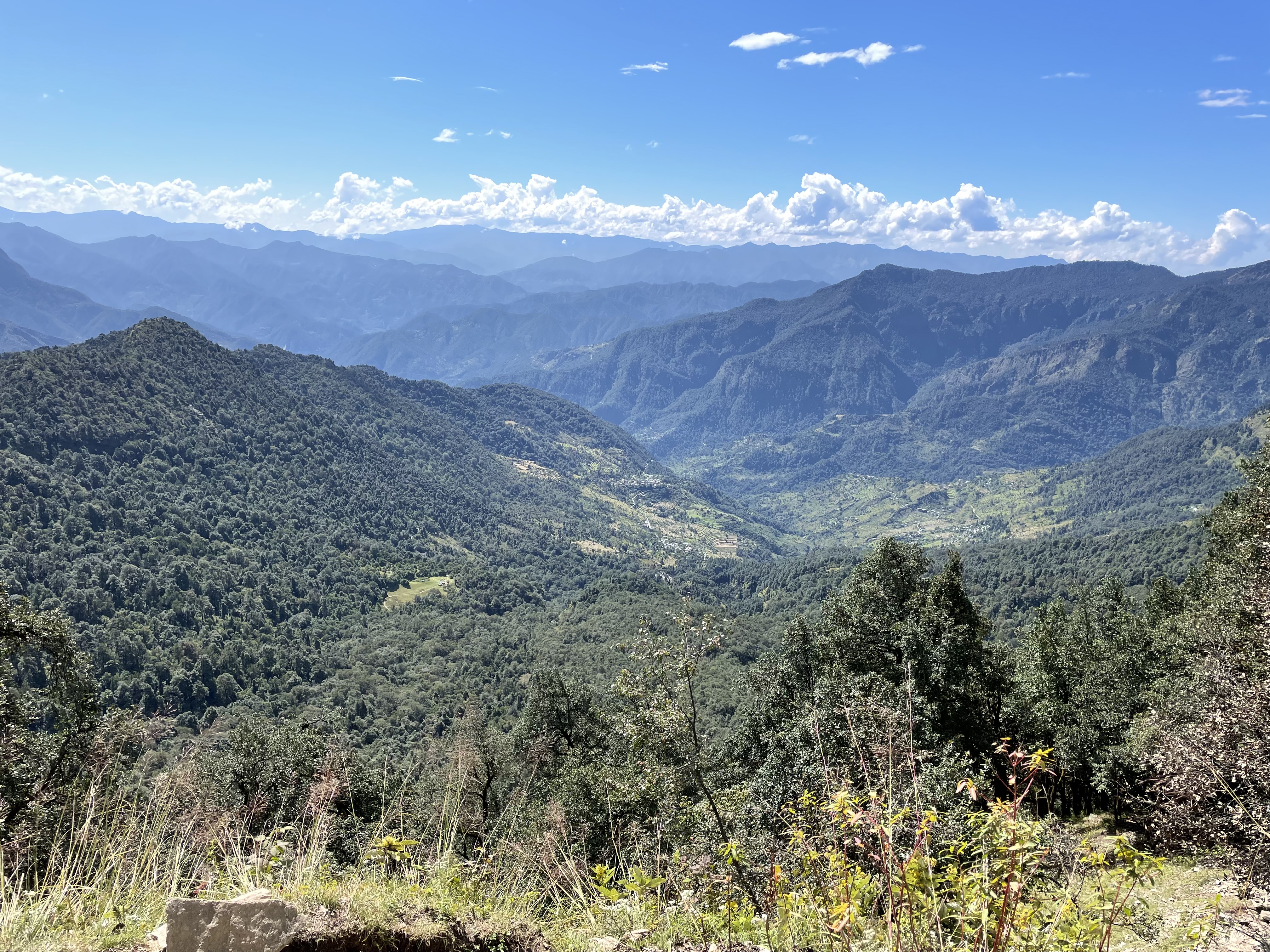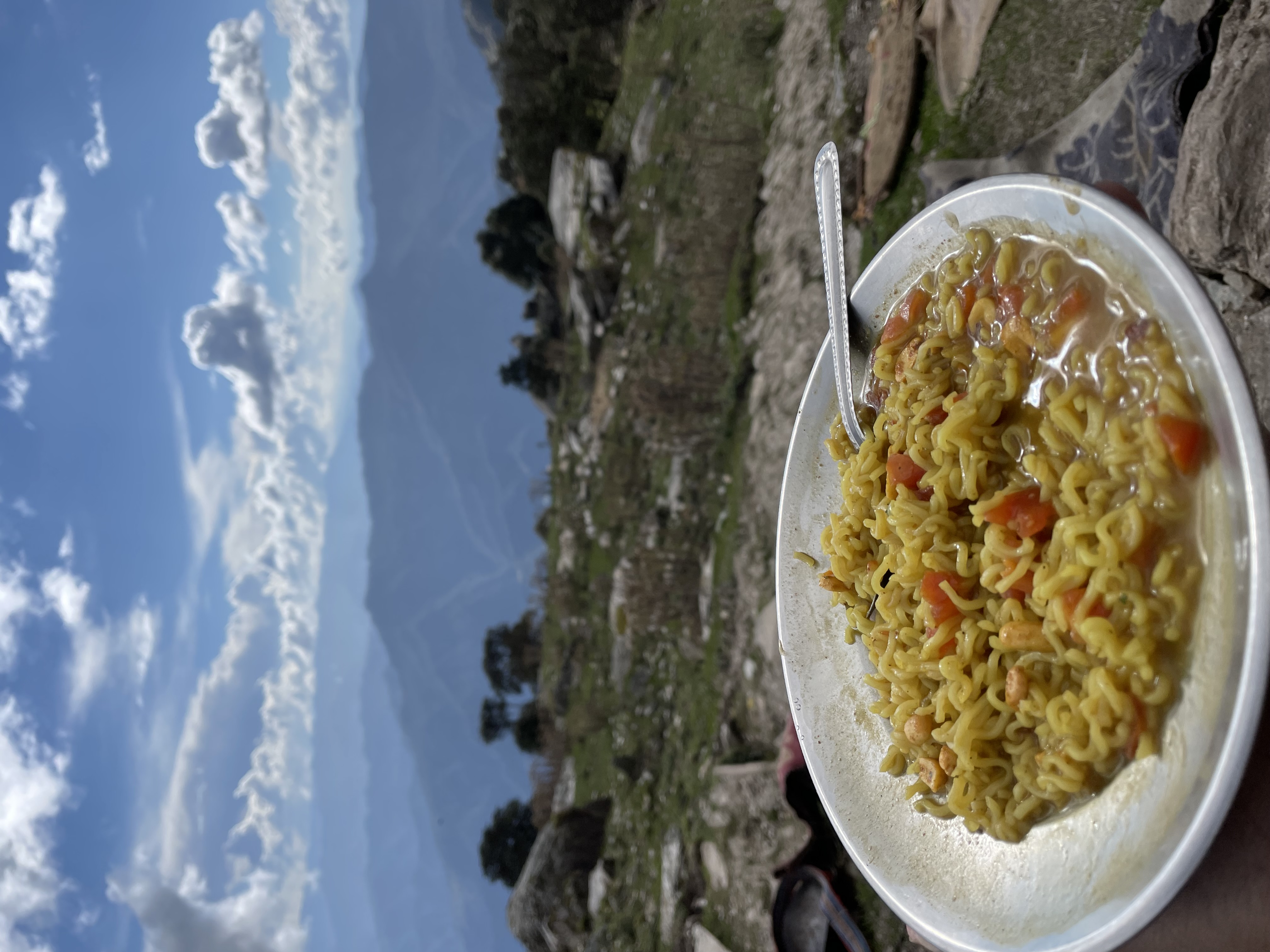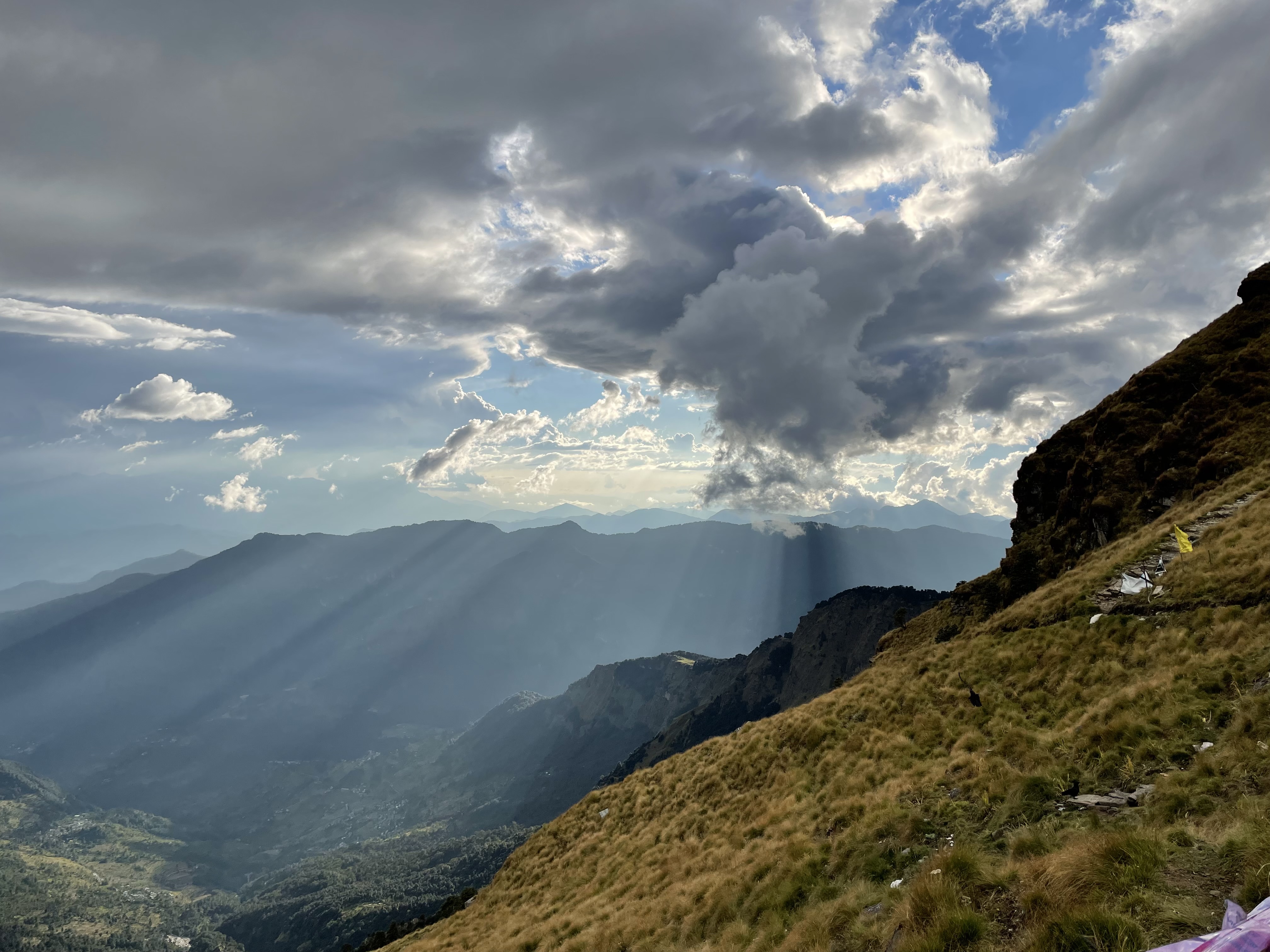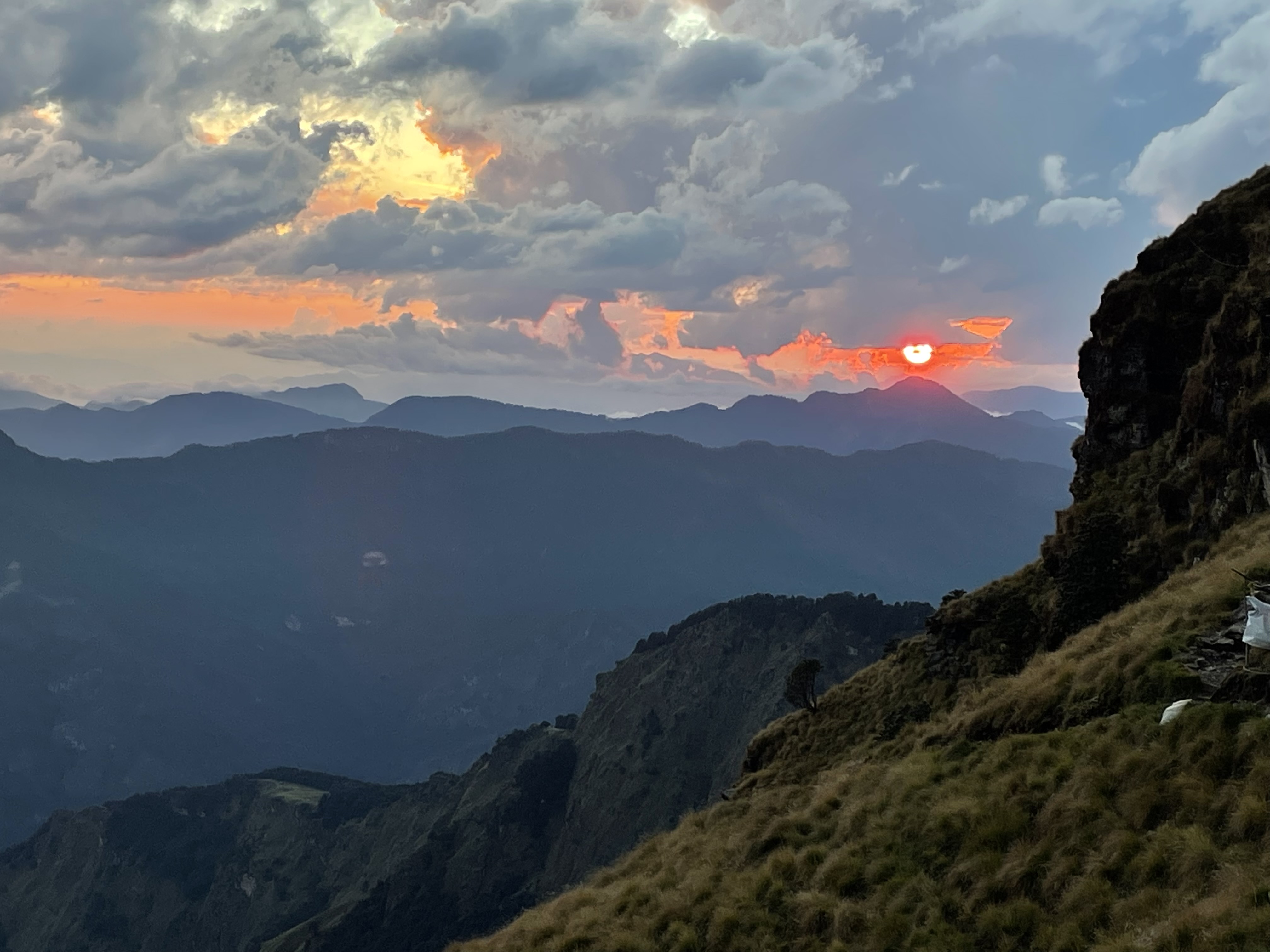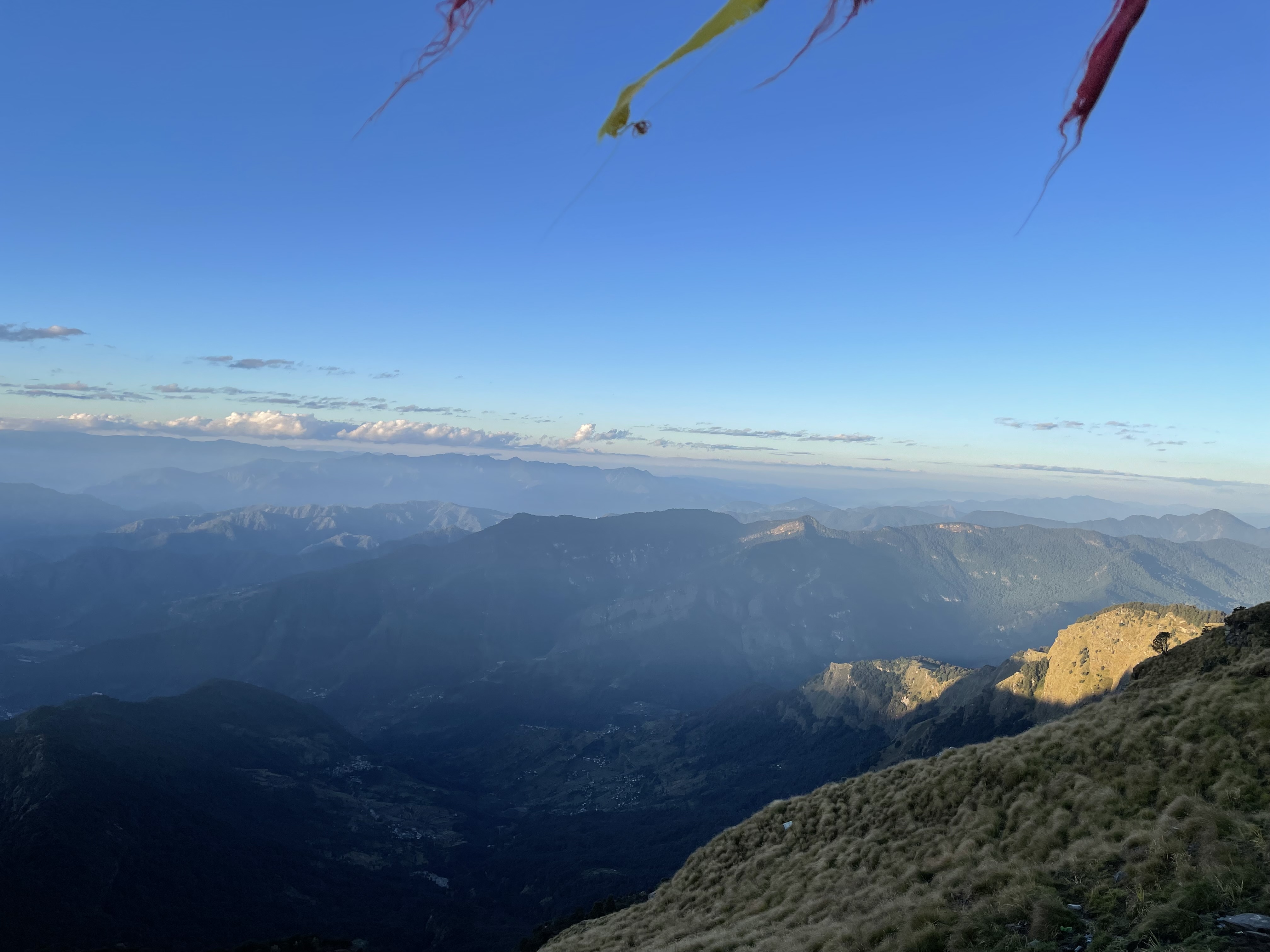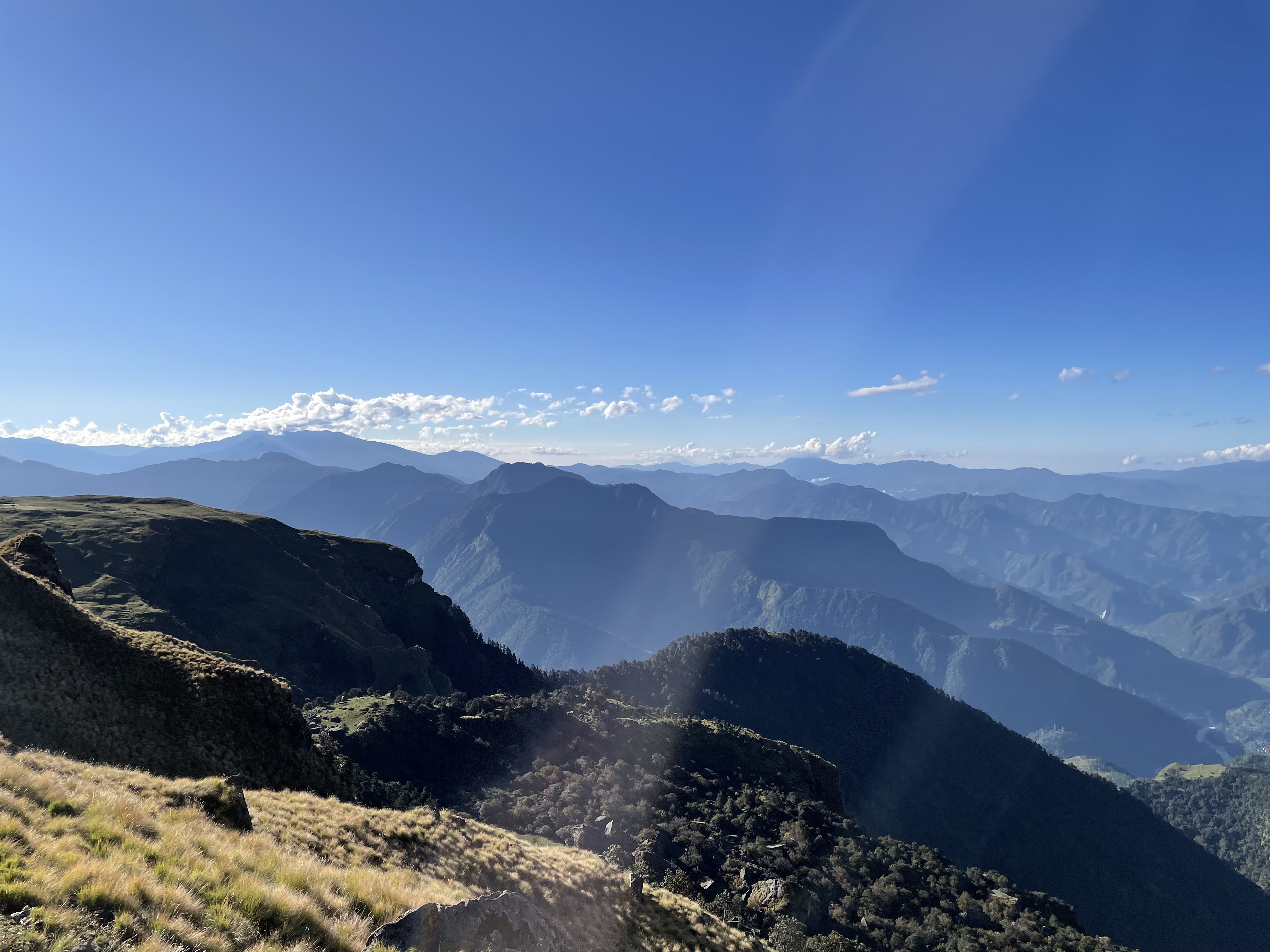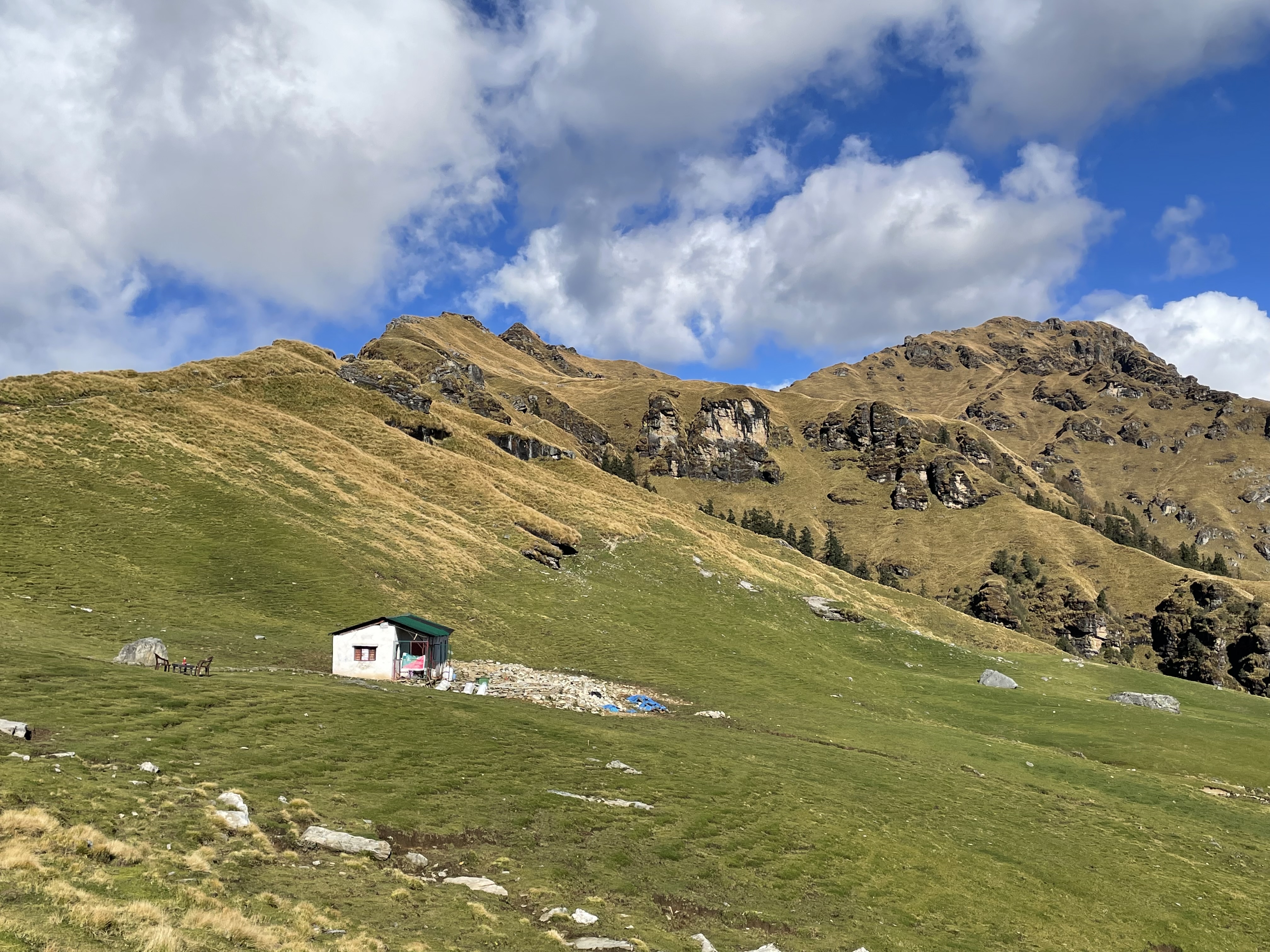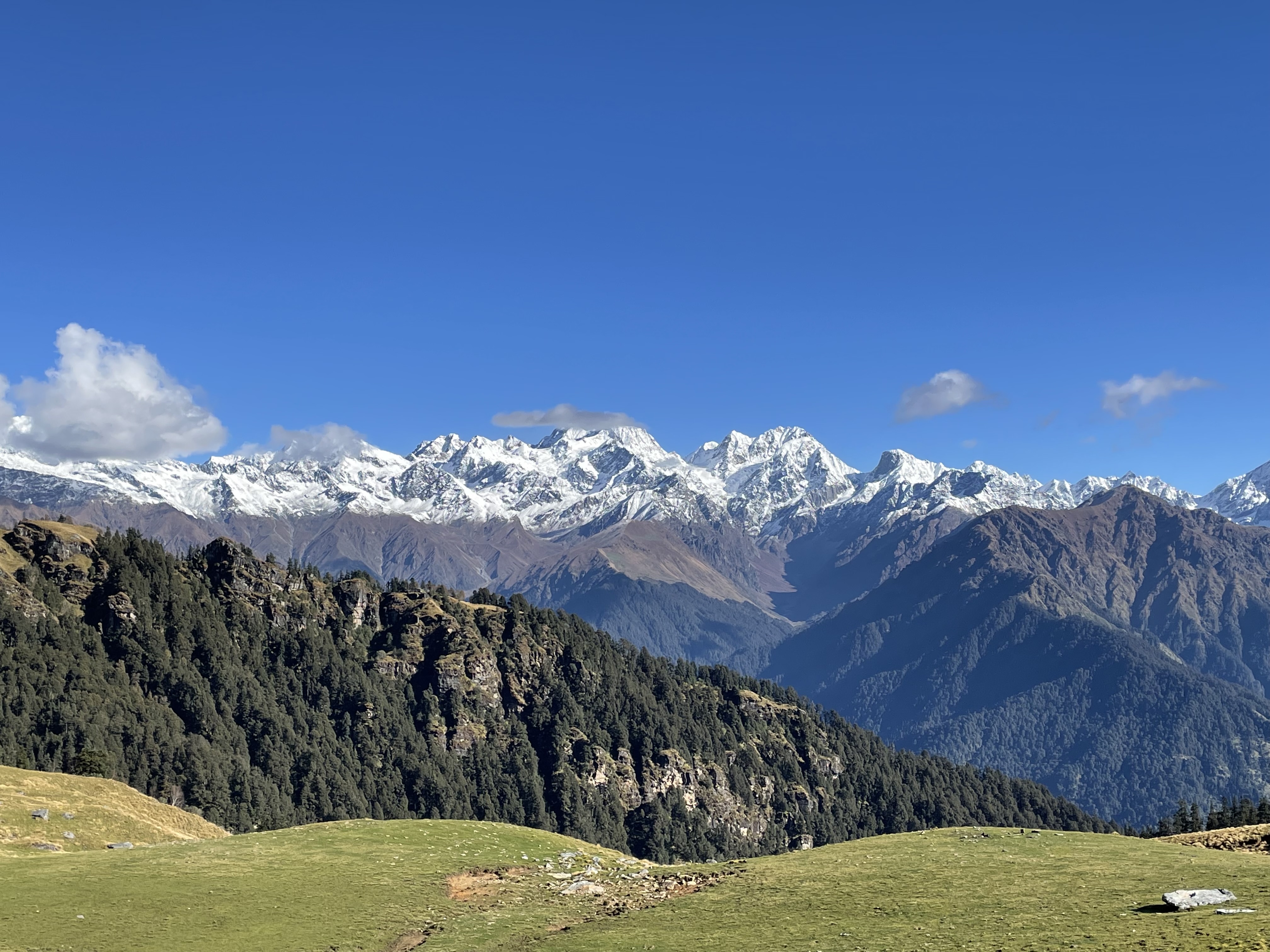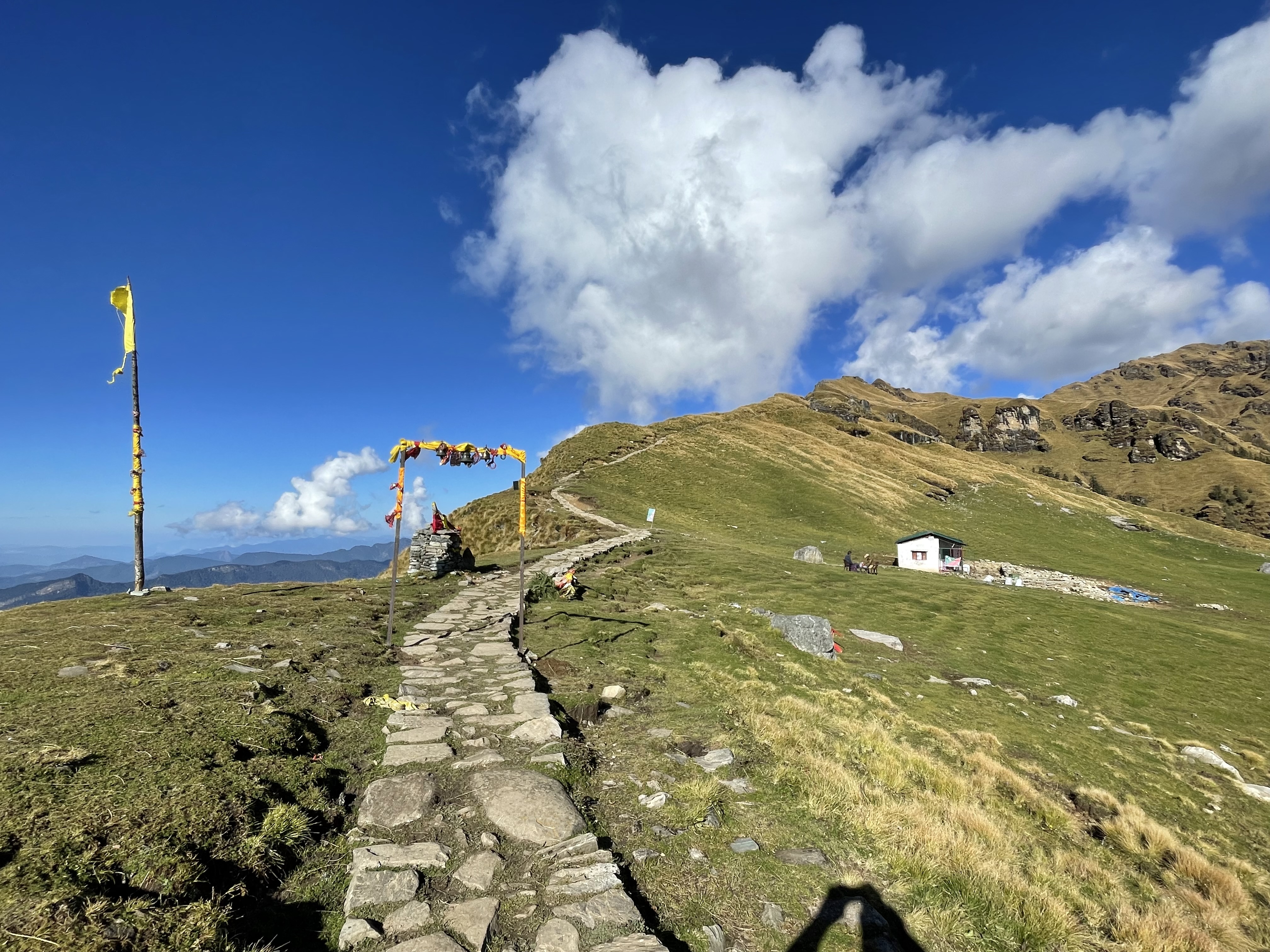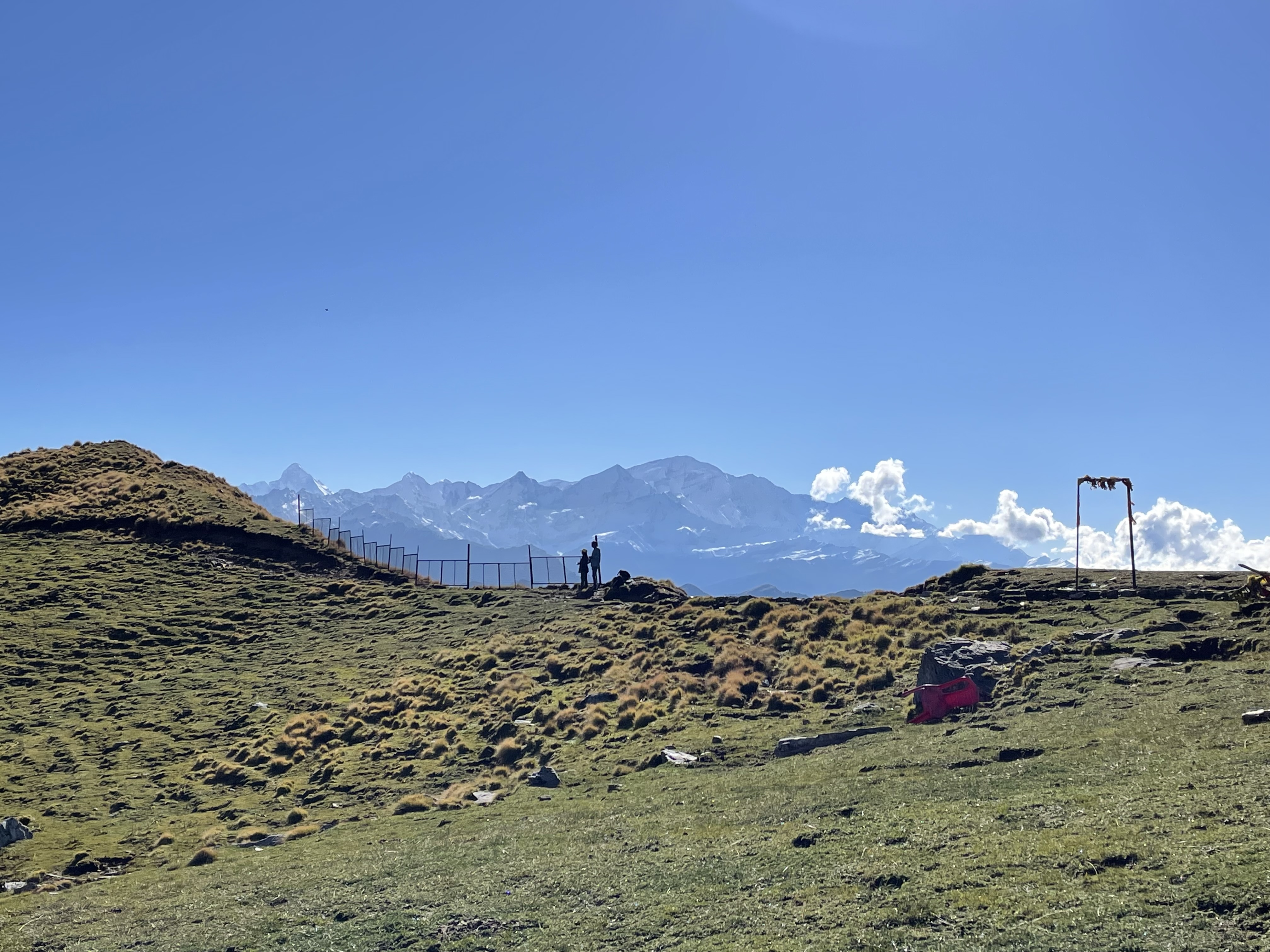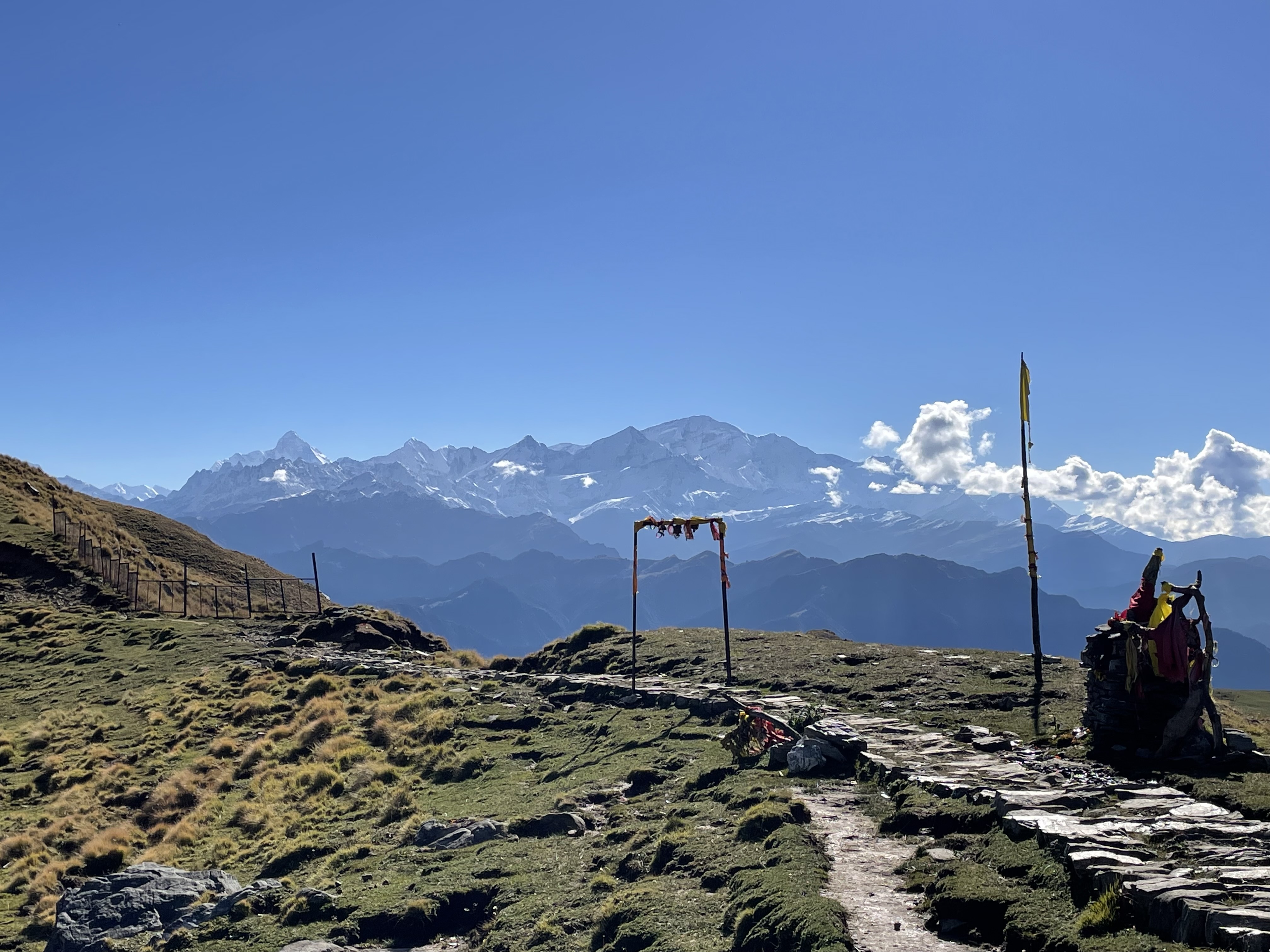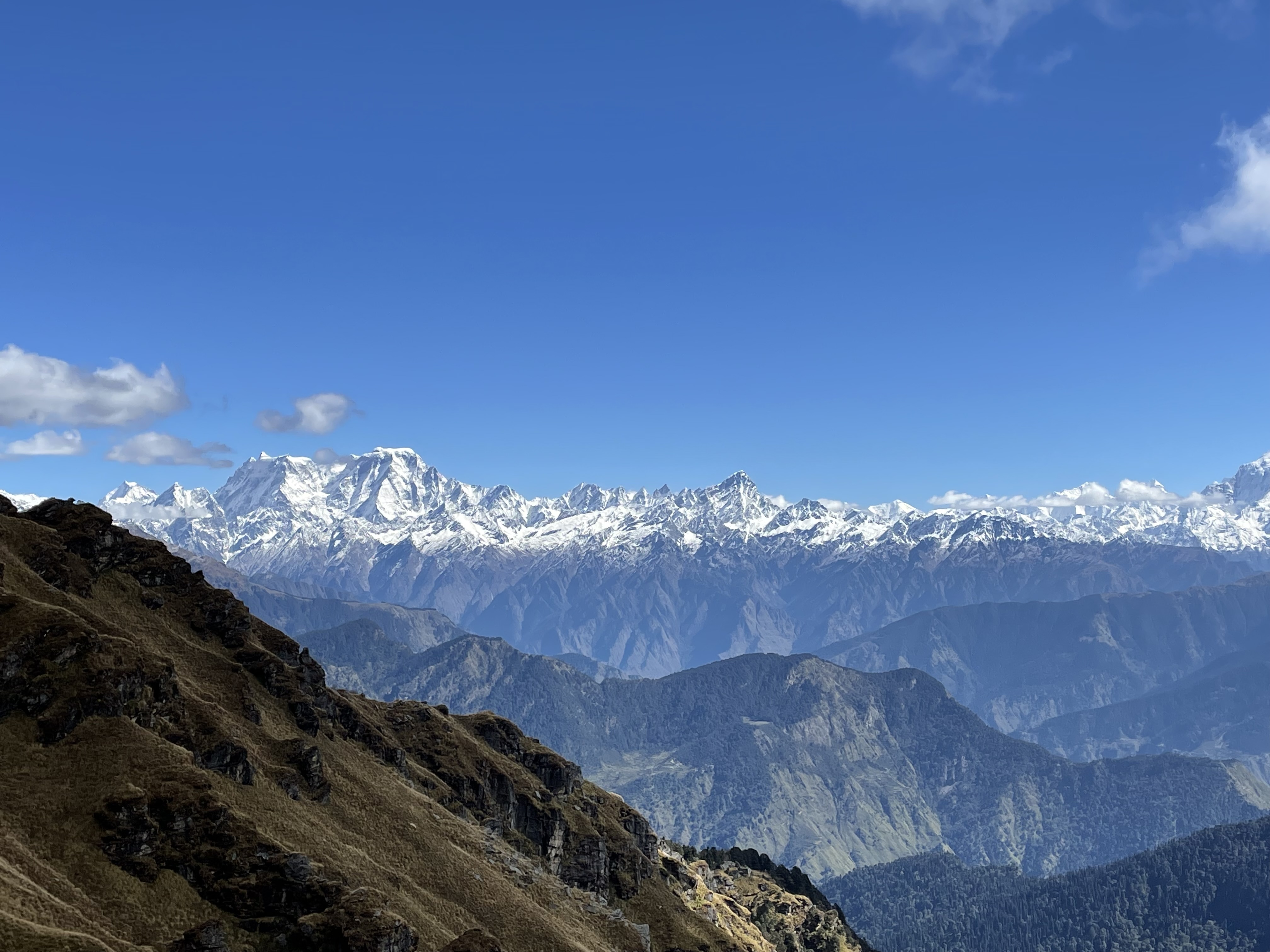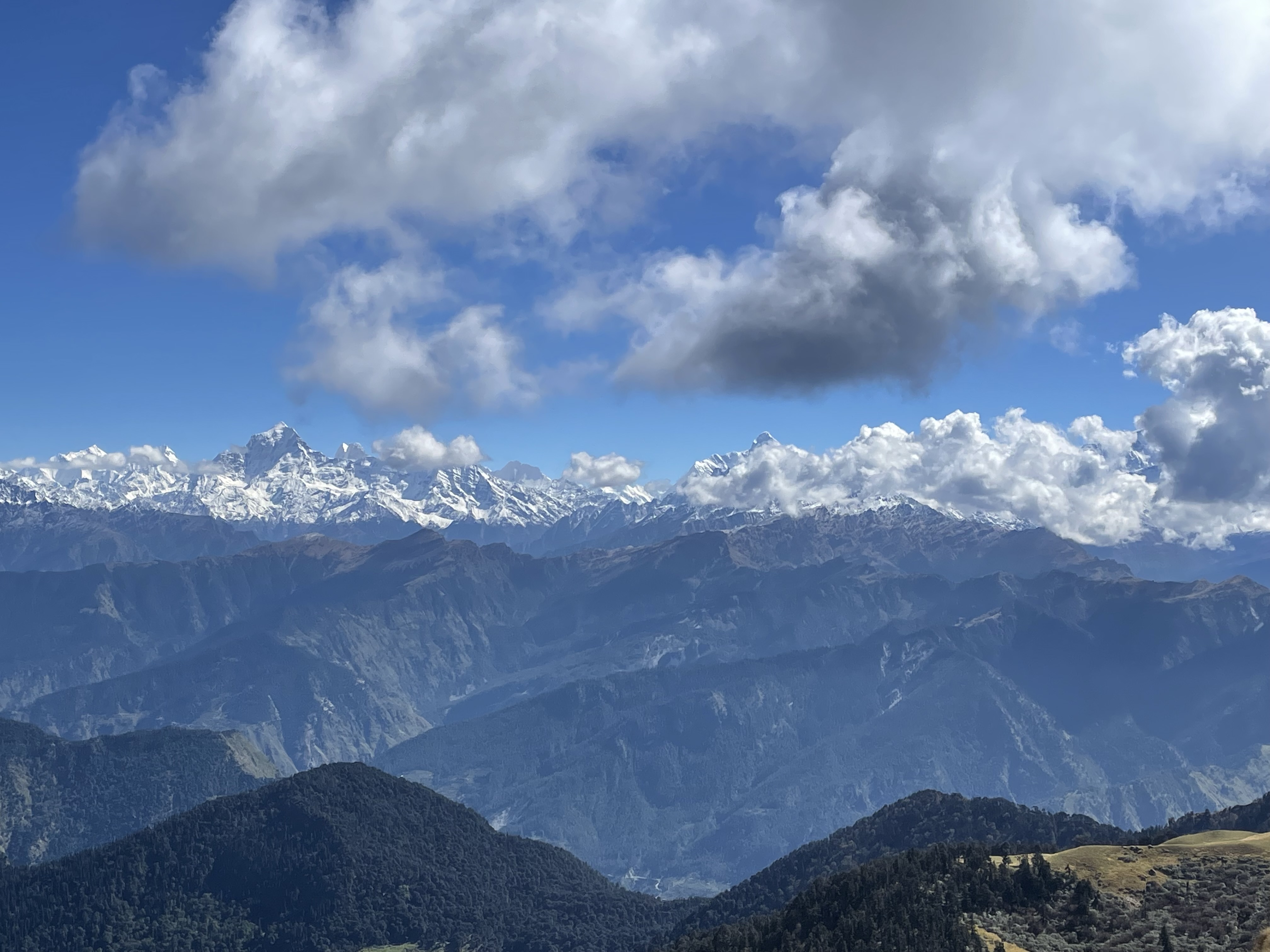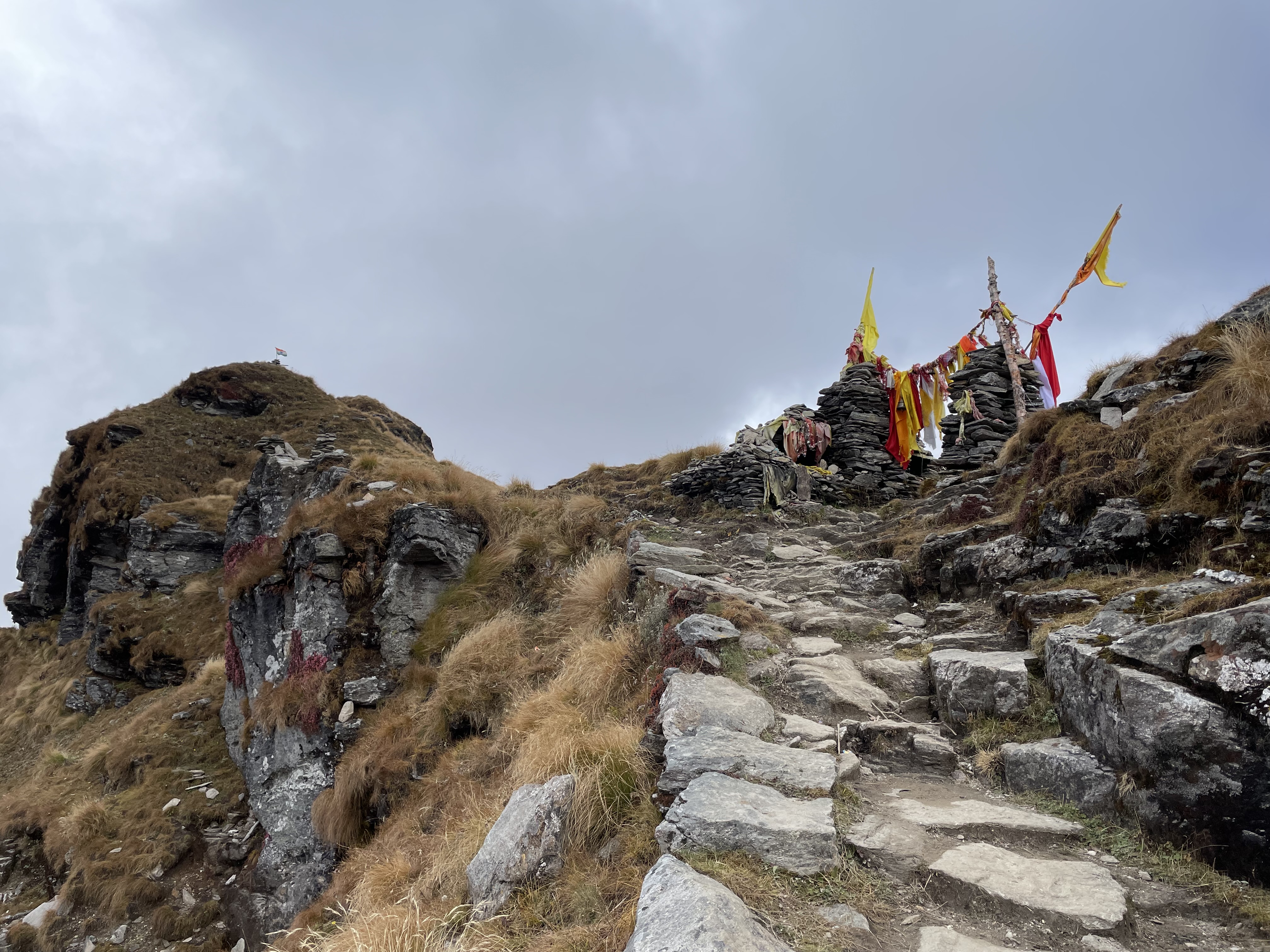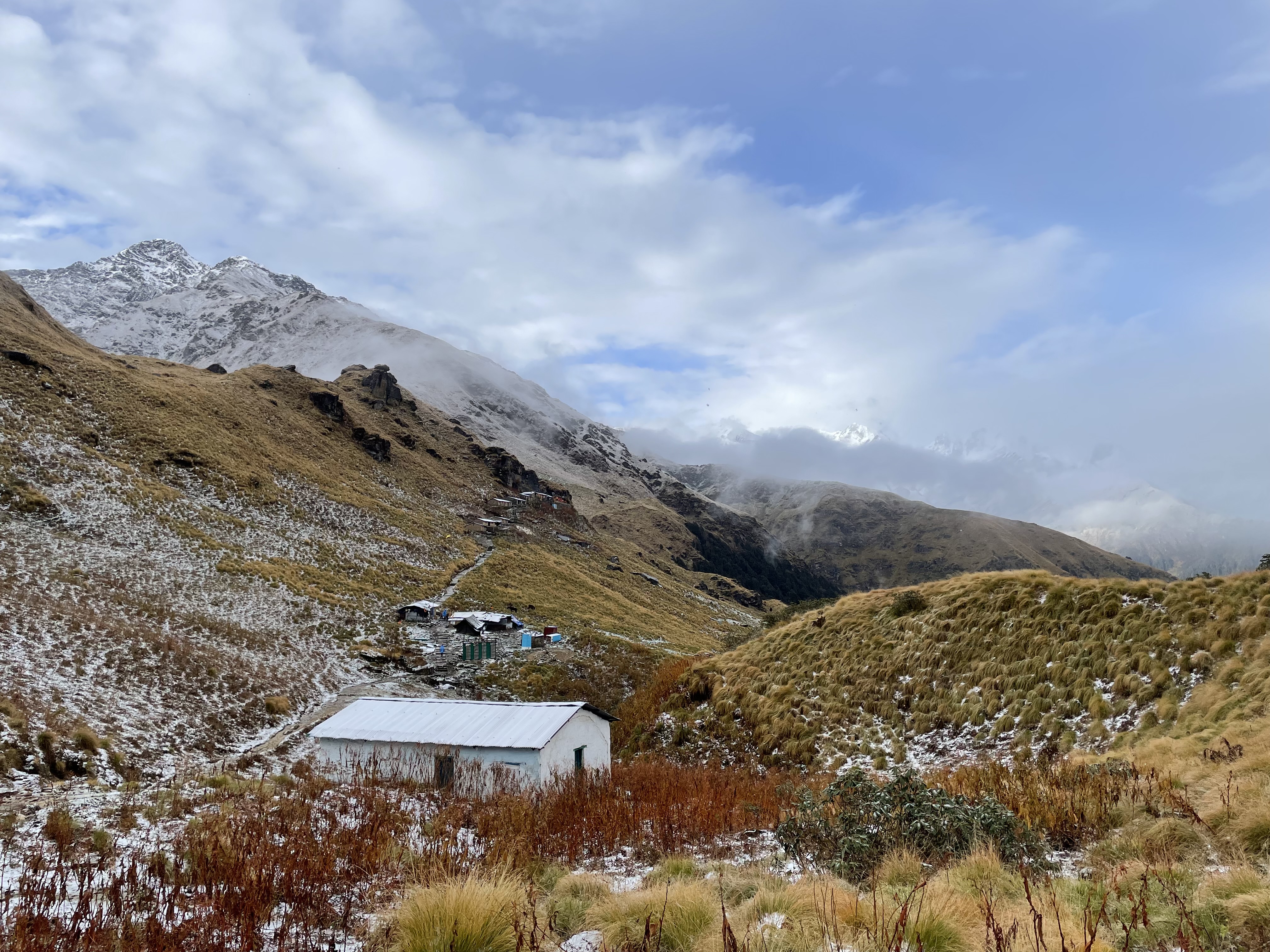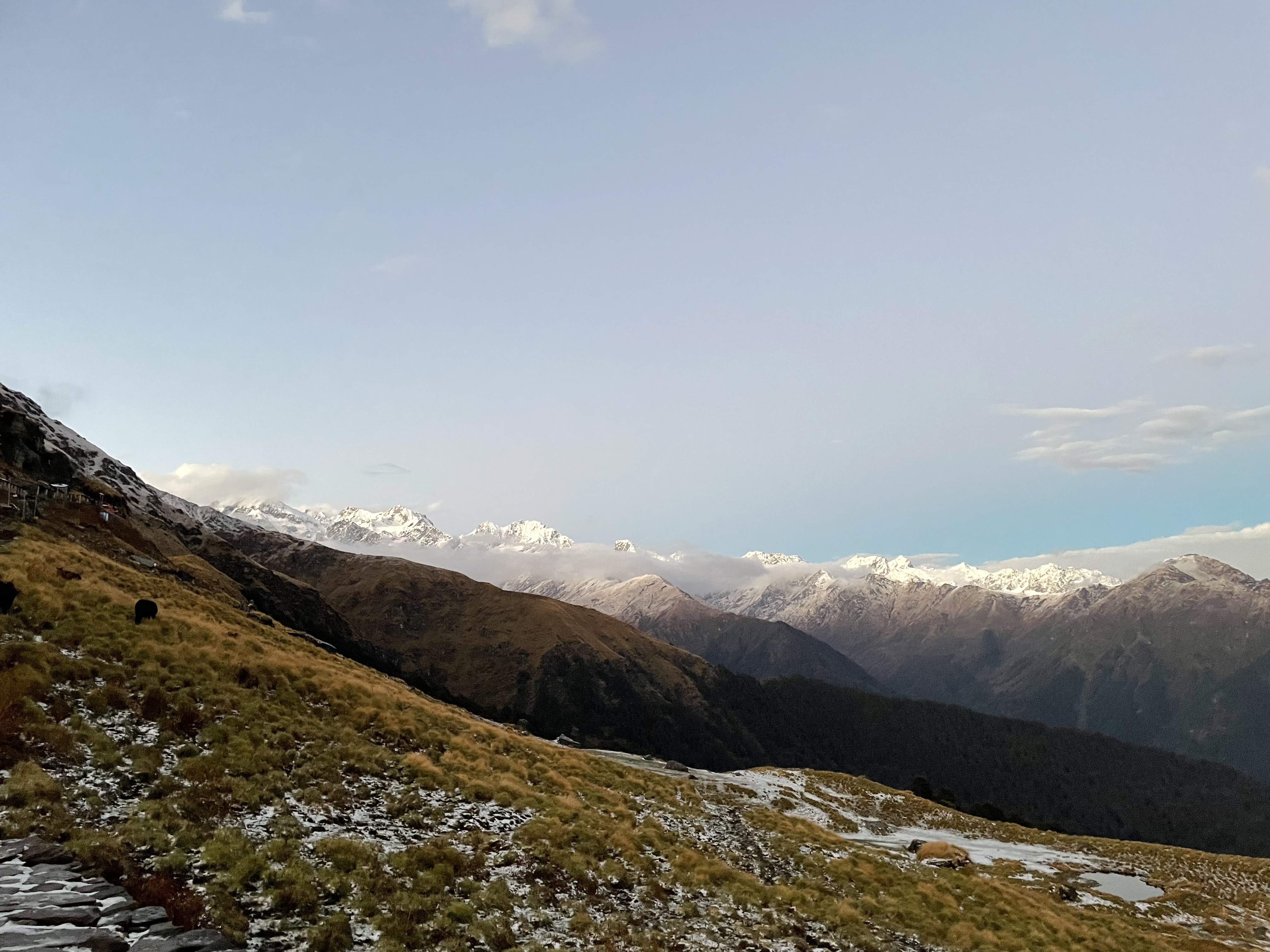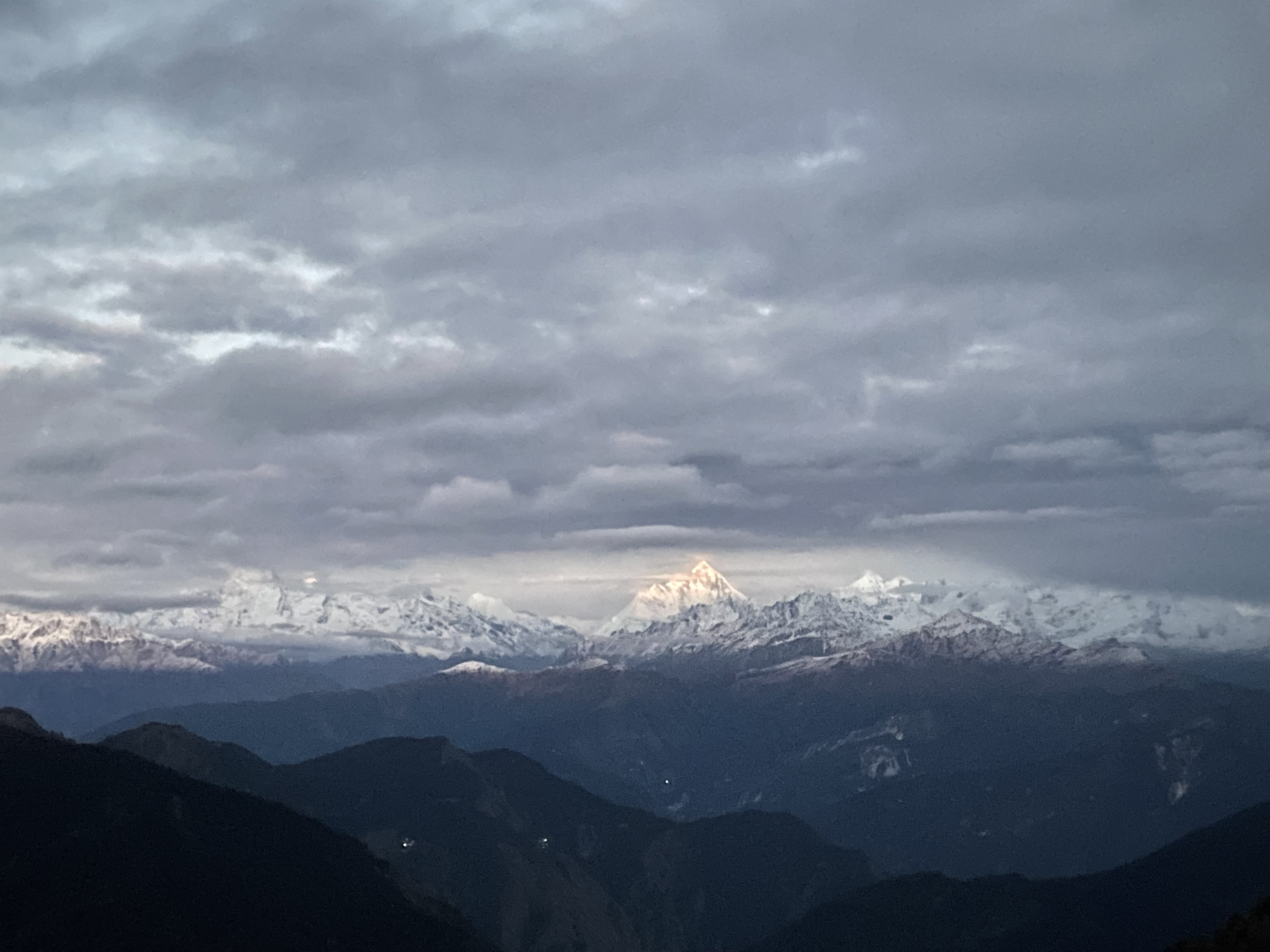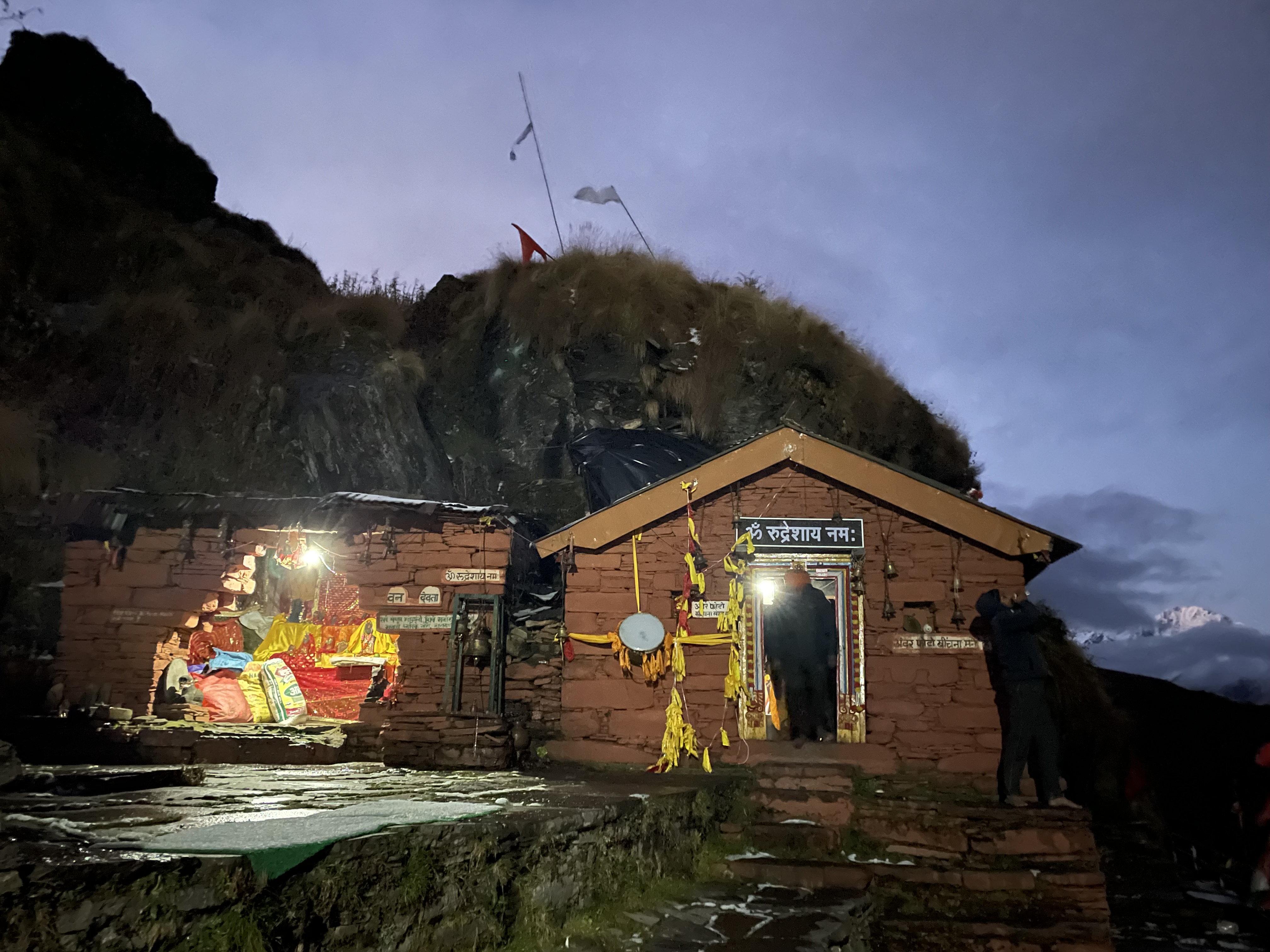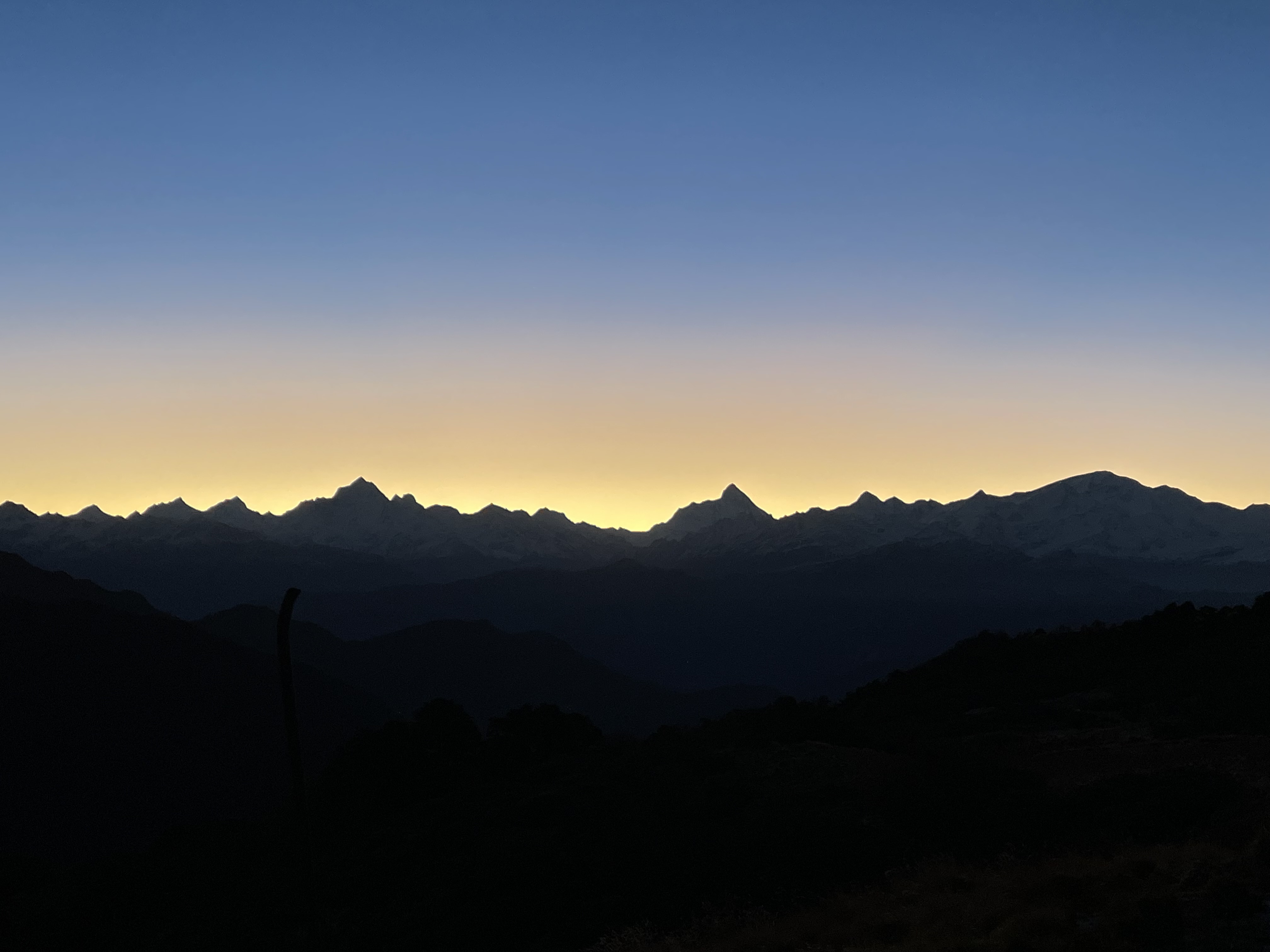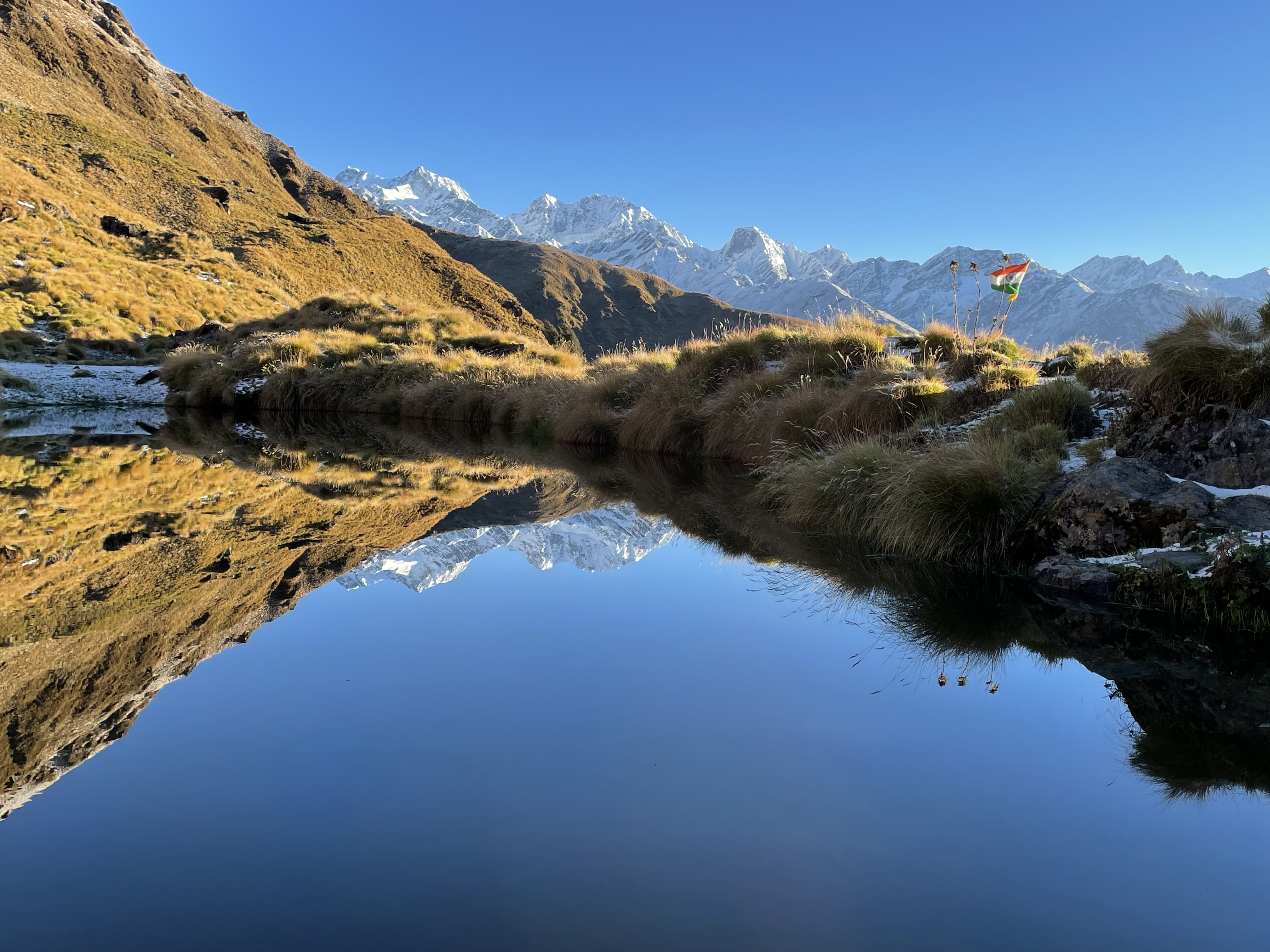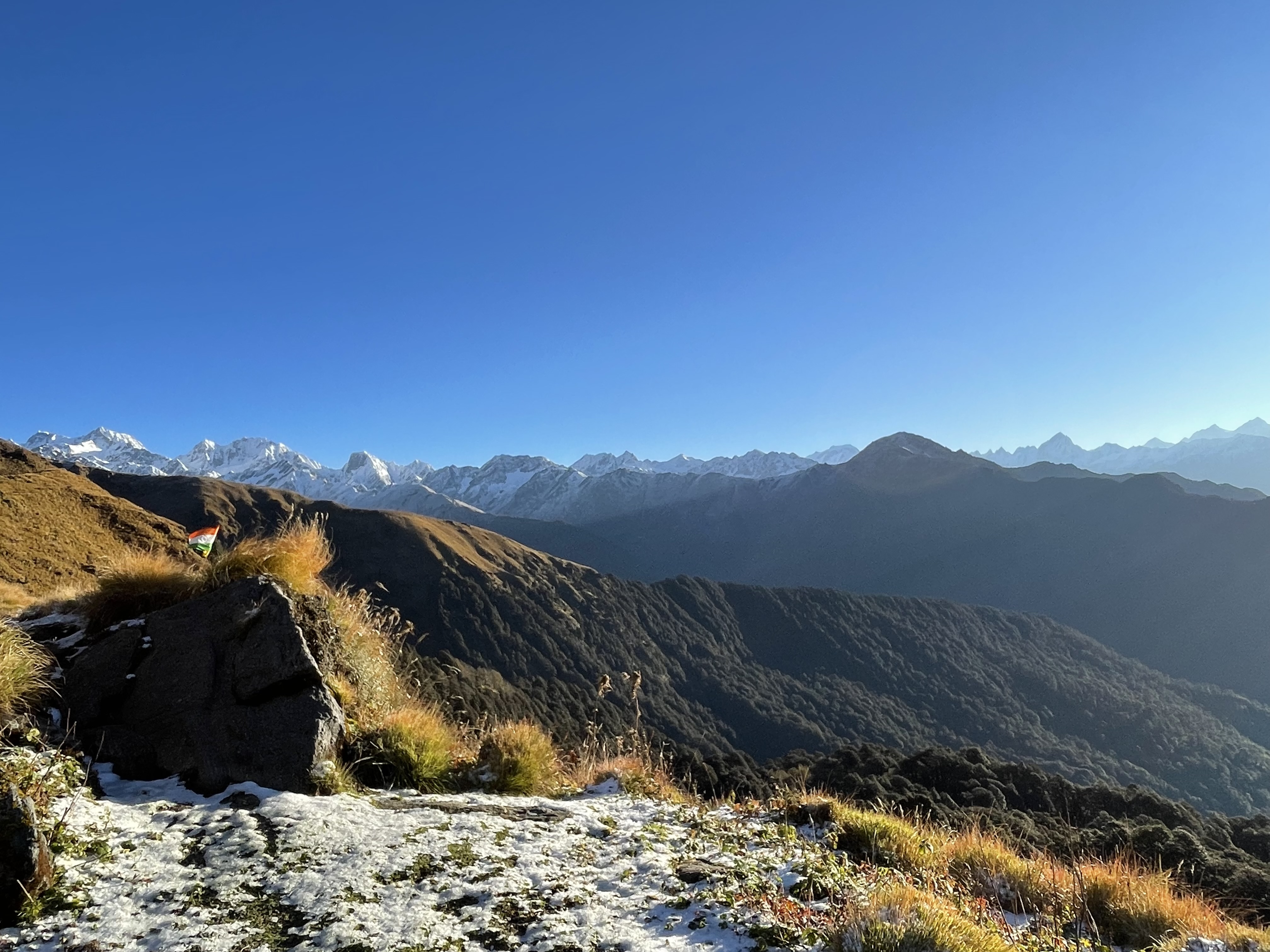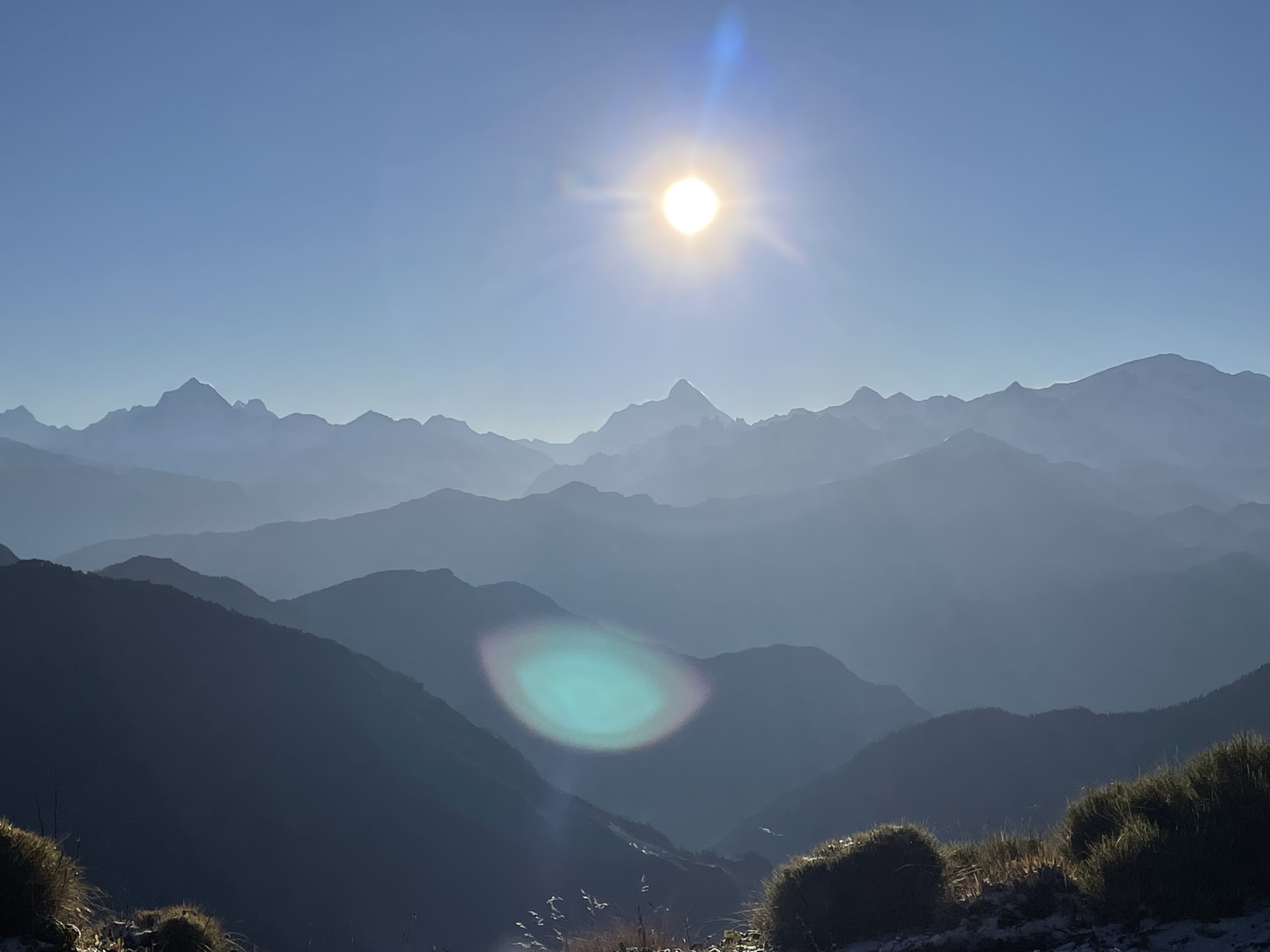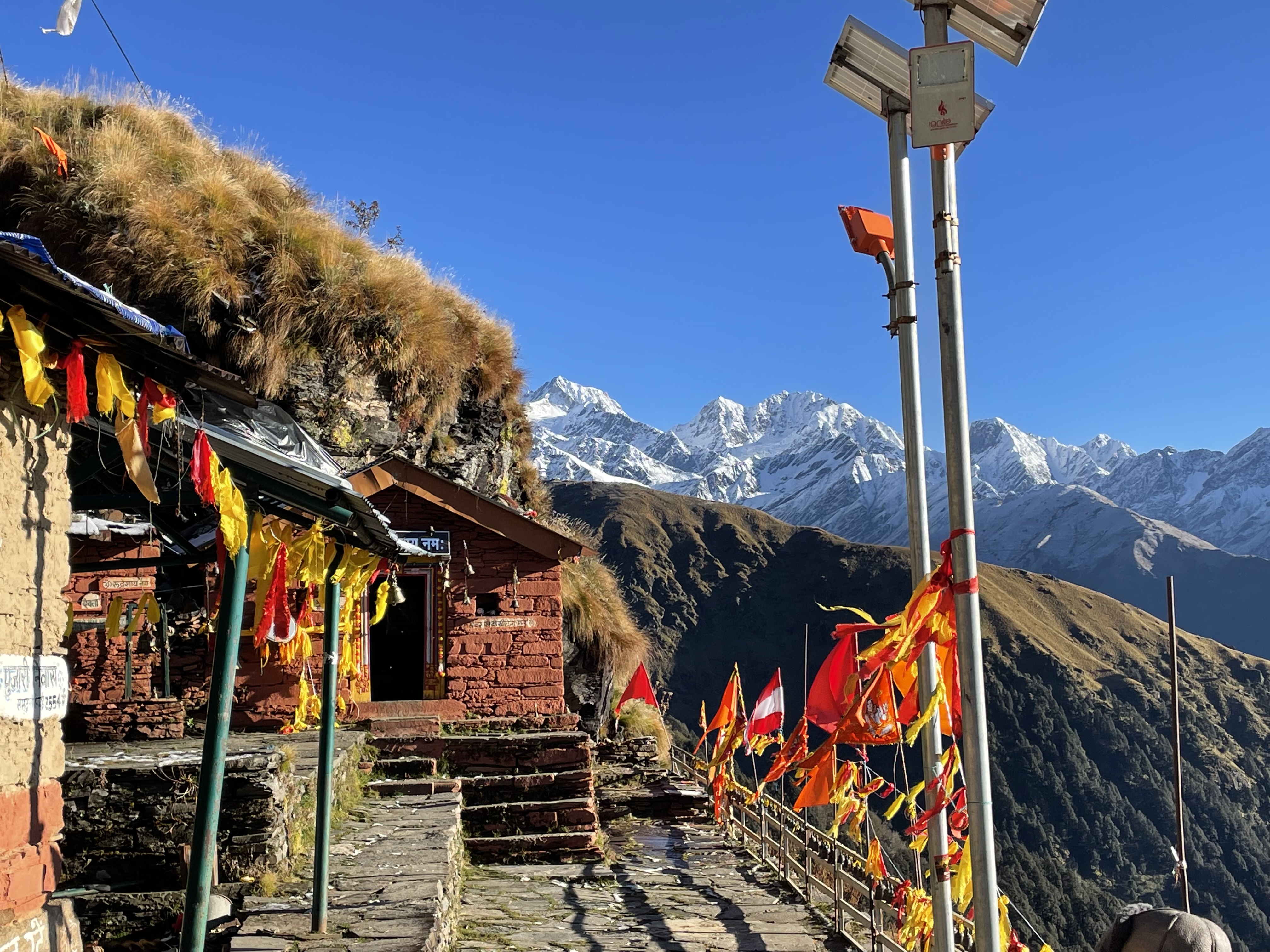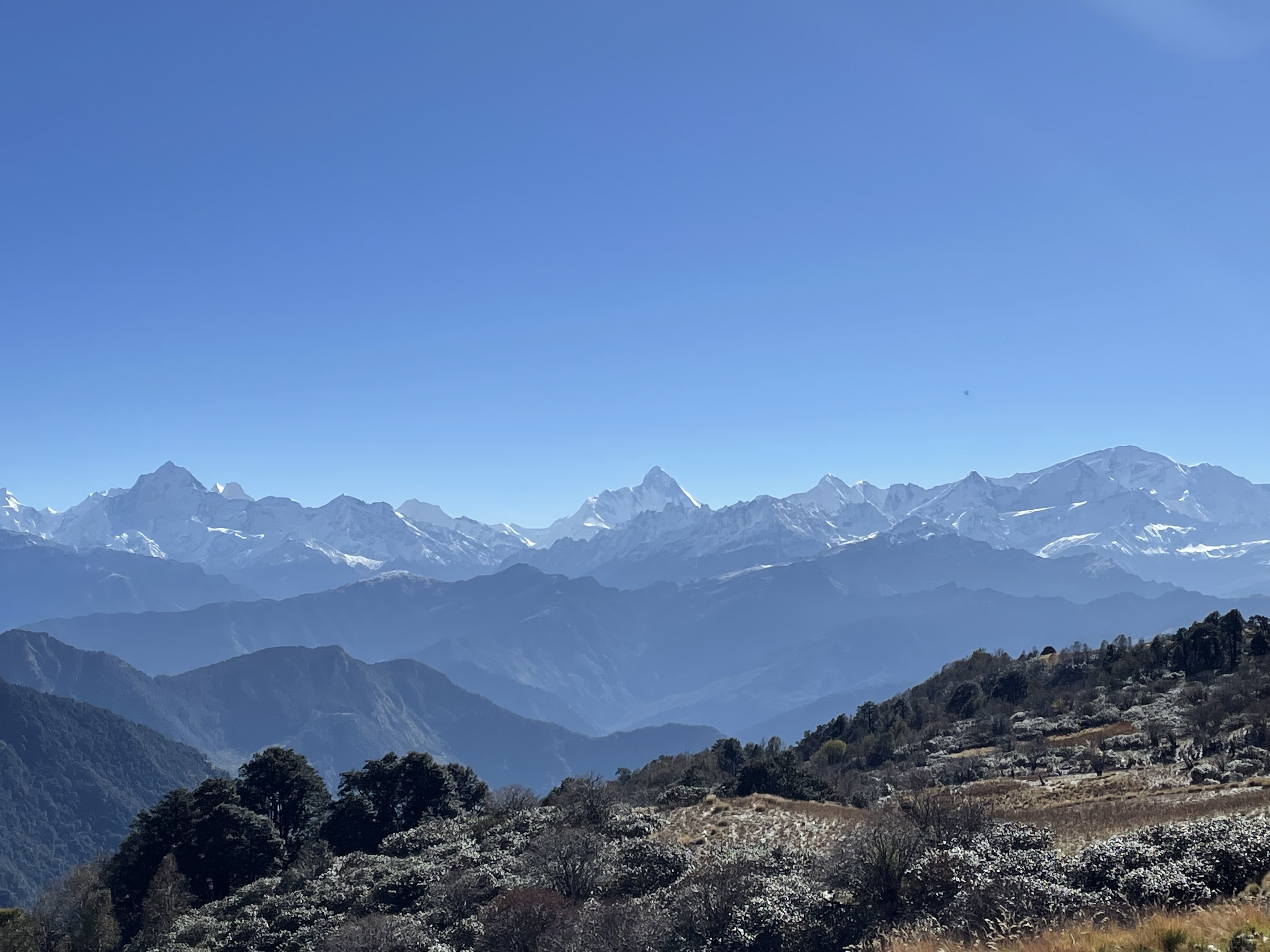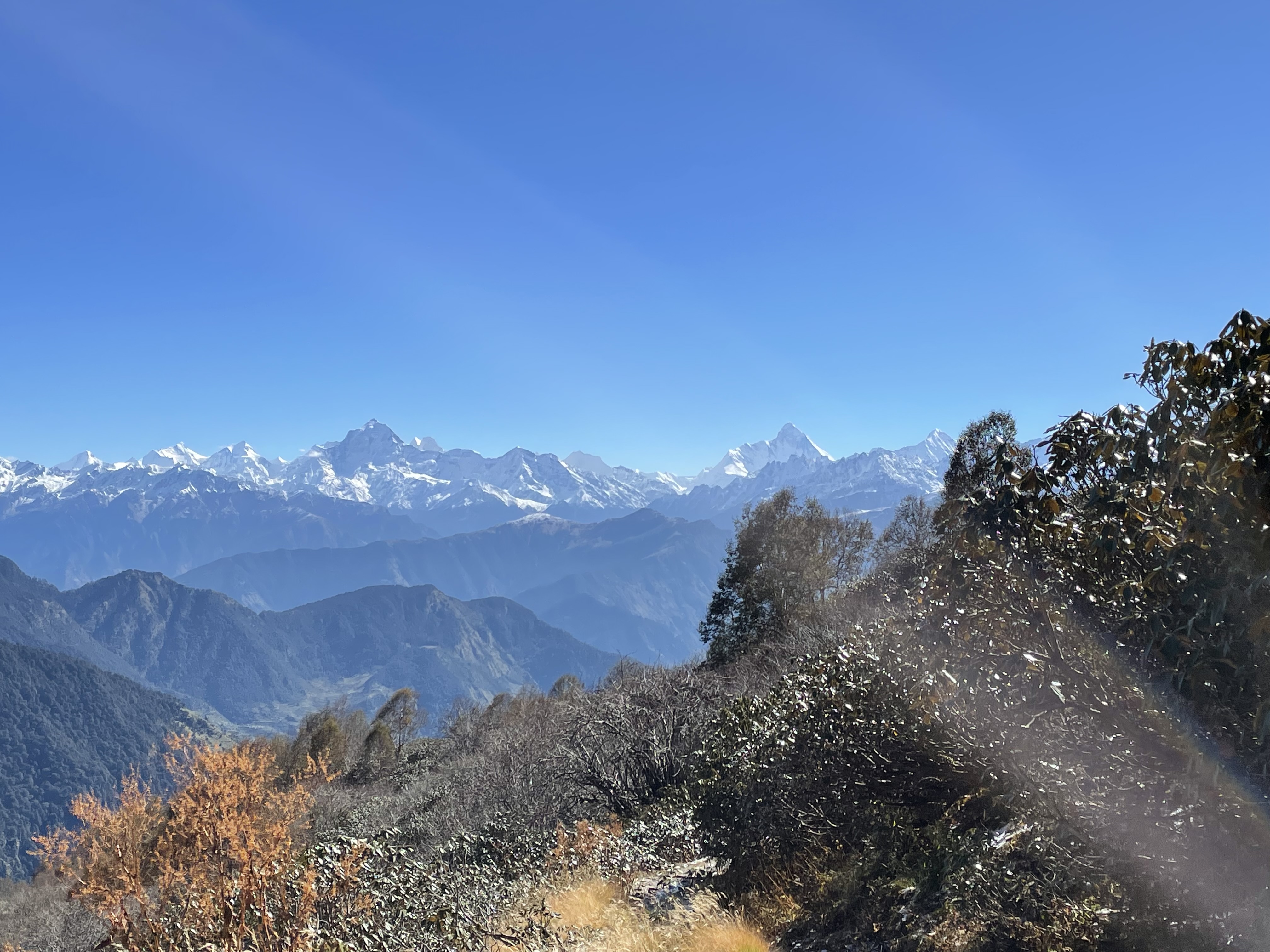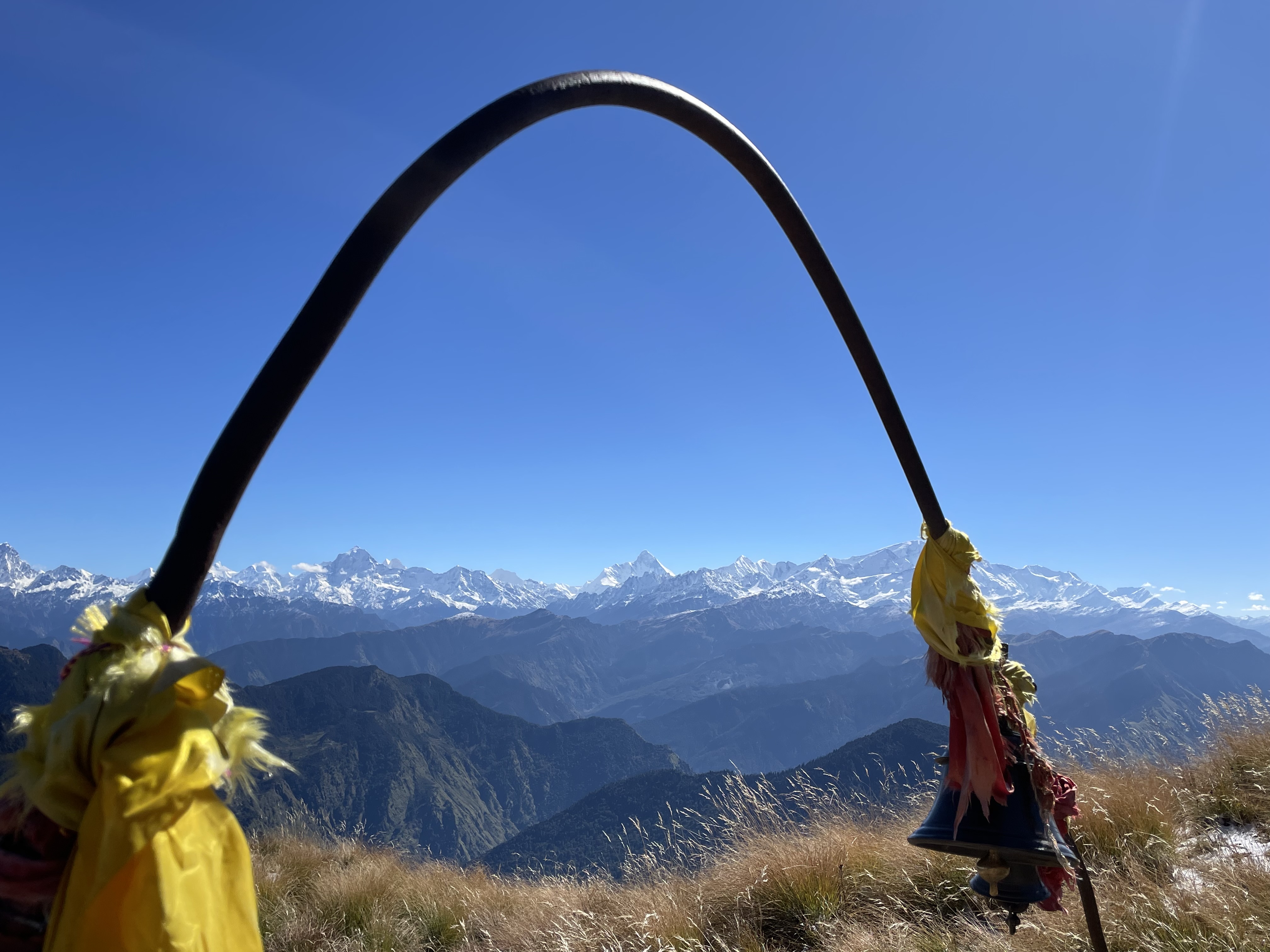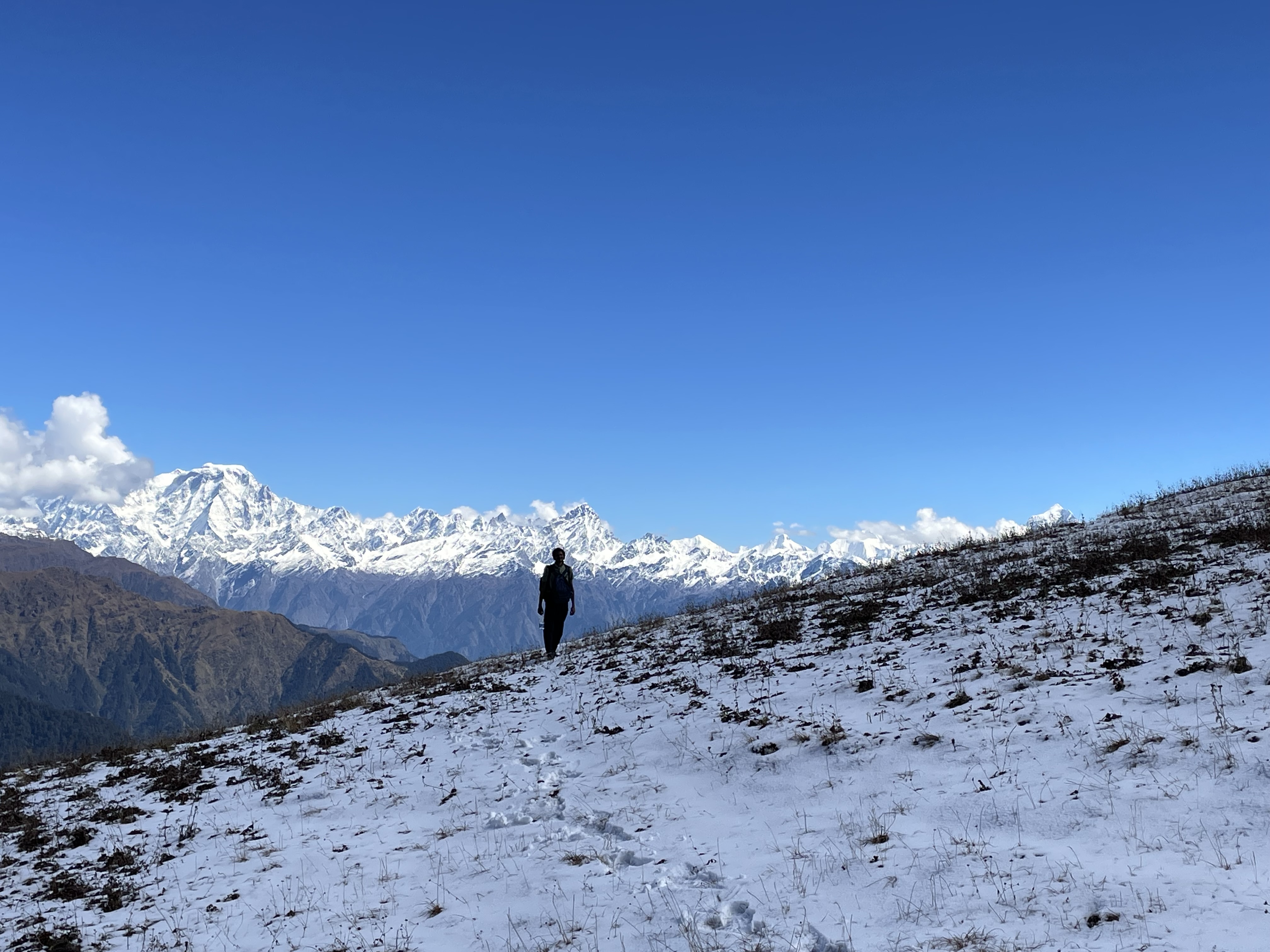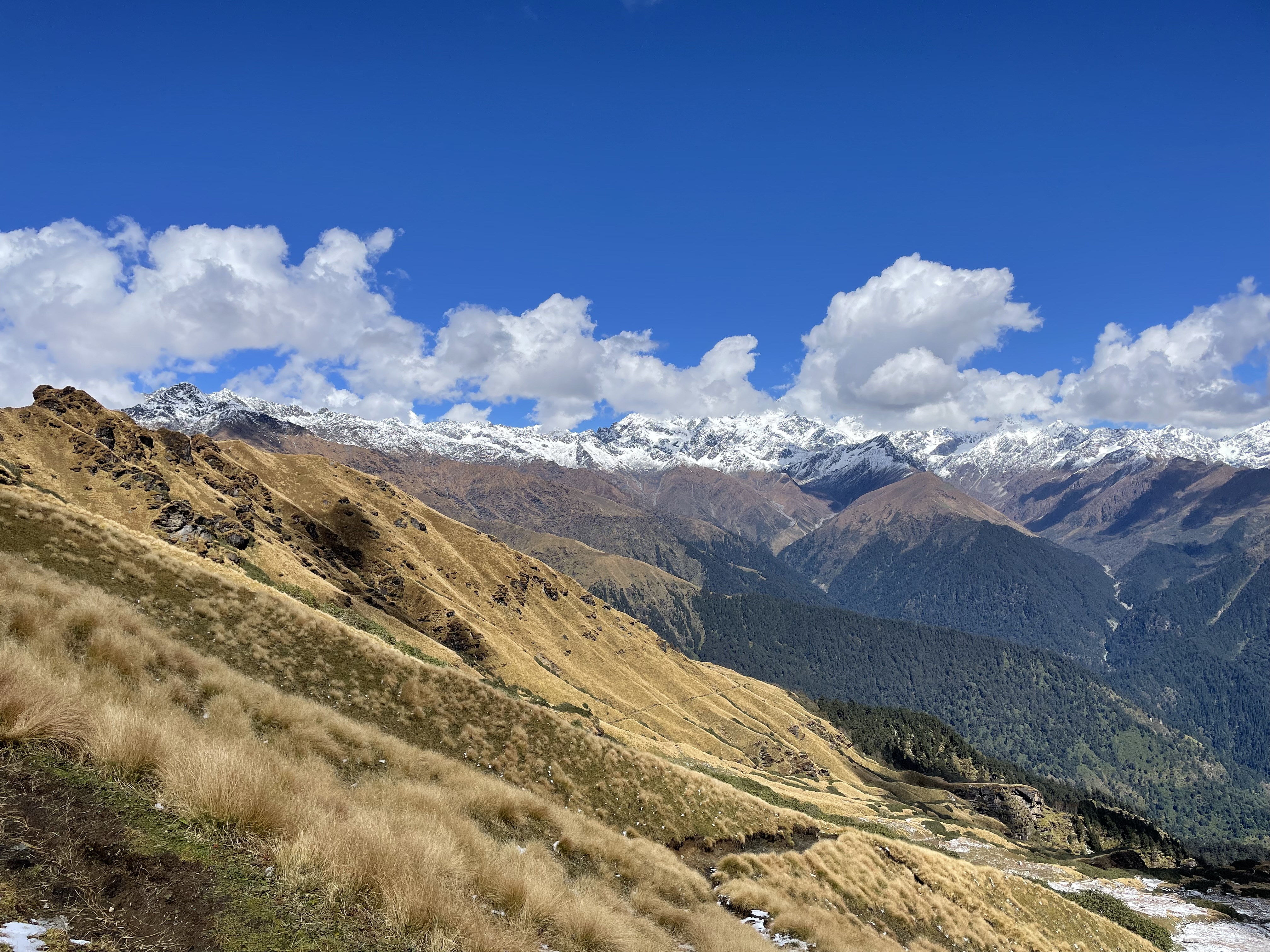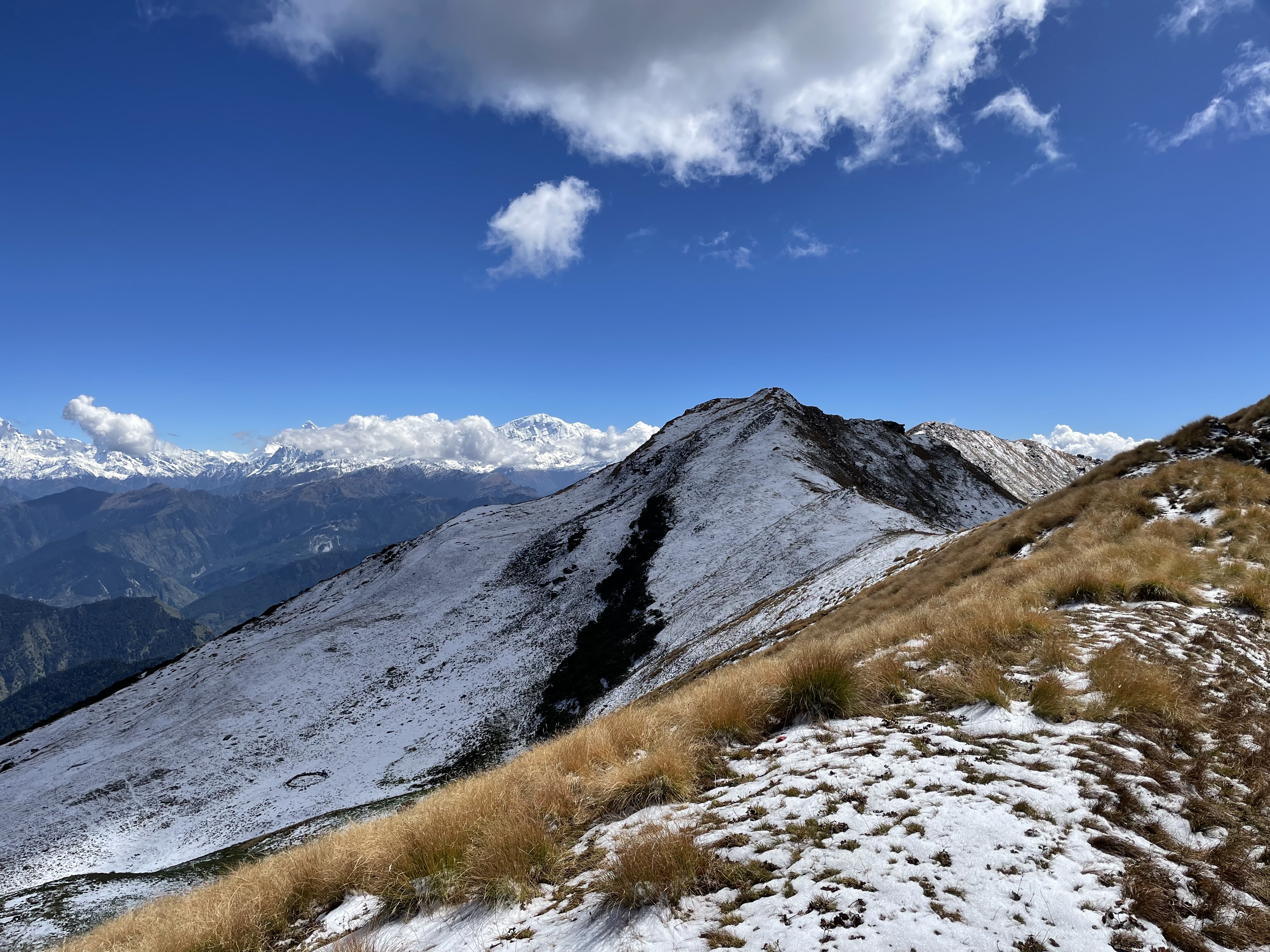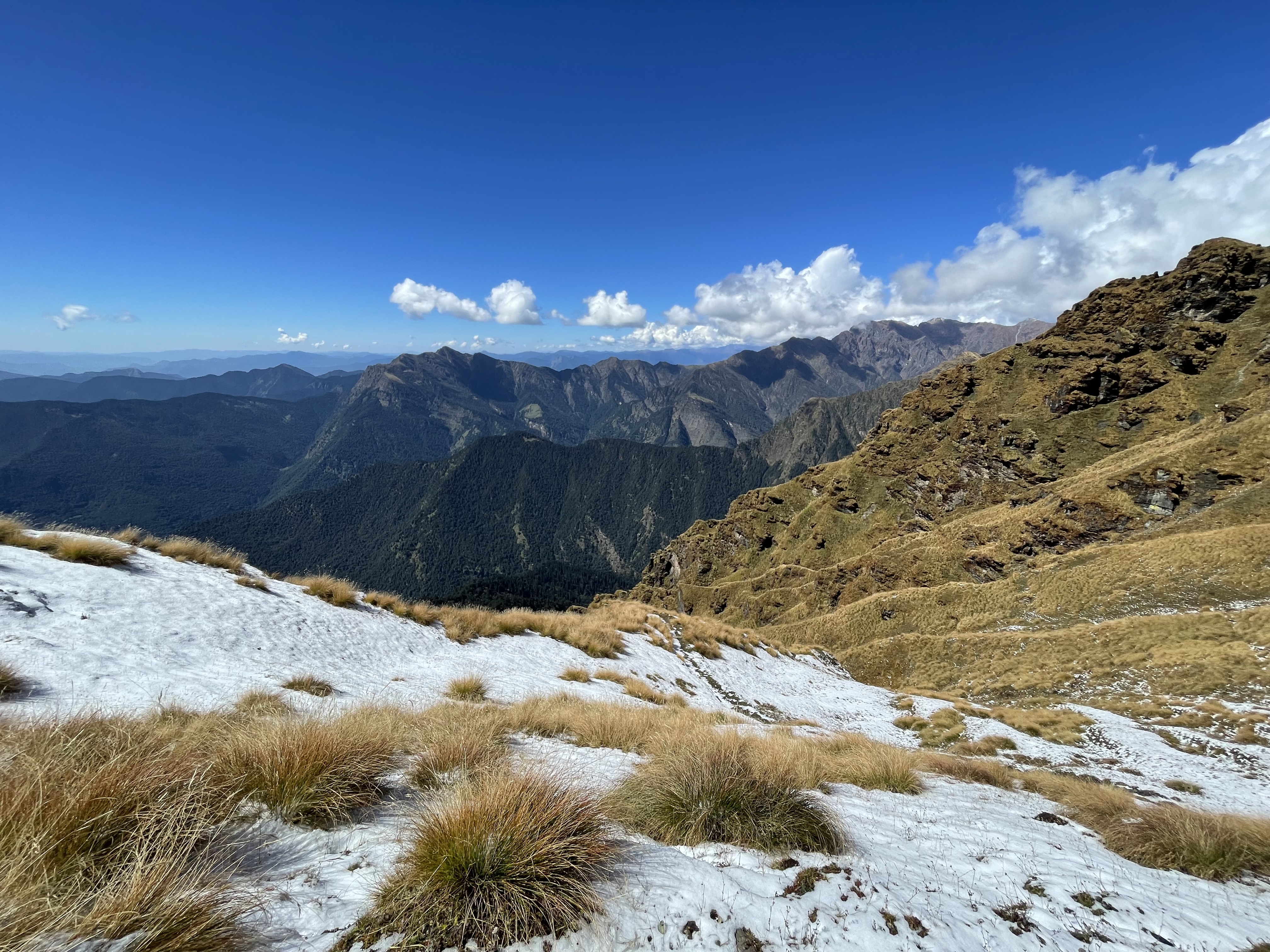Last Sunday (18 May 2025), the Rudranath temple (3,600m/11,800ft) in Garhwal Himalaya, Uttarakhand, reopened after its annual winter hiatus. Rudranath is considered to be the toughest to reach amongst the Panch Kedar temples. Unlike other Shiva temples where he is worshipped in the form of a linga, his face is worshipped here inside a cave temple. I had the fortune of visiting Rudranath in October 2022, just a week before the symbolic image of Shiva was to be brought down to Gopeshwar for the winter hiatus.
Day 1
It took us two days of trekking up the mountains to reach Rudranath. On day 1, the trail started with a gentle ascent amidst rhododendron forests and meandering streams, but rapidly became steep and difficult. As much of the trail was below the tree line, there were not many windows for viewing the mountains and valleys. The day’s walk ended in a trekker’s camp (tea house) situated just below a long ridge, with 180º views of the valley we climbed from. The interplay of sun, shadow and clouds painted fleeting masterpieces across the evening sky. The crisp mountain air carried whispers of the promises of the road ahead.
Day 2
On the second day, just as we climbed up the ridge, the trail opened up to vast high-altitude meadows. We were treated with stunning 360º views of snow clad mountains, with the peaks of Nanda Devi, Nanda Ghunti, Trisul and Haati Parbat distinctly visible. The path continued skirting the ridge, with occasional detours. By noon, we crossed the highest point of the whole trek at Pitrdhar.
As is typical in the Himalaya, weather deteriorated quickly thereafter. The rest of the trek was done in incessant snowfall. The looming fear of a Himalayan black bear—its presence confirmed by other trekkers—only added to the intensity of the journey. We finally made it to the temple within the time for the evening aarti!
The aarti was an uplifting experience, a feast for the senses and the soul. The sun had long vanished and yet the temple glowed like a beacon in the night. The tolling of the bells, the conch’s cry and the damaru’s pulse stirred a numinous awe in me that teetered between reverence and trepidation.
Day 3
The skies had cleared up overnight and the sun was rising behind Nanda Devi, creating a stunning panoramic silhouette of the mountain ranges. We briefly visited Saraswati Kund which is a short walk northwards behind the temple. The kund was amazingly still, putting a finely polished mirror to shame. Several distant peaks in the northern direction were visible, with the majestic Chaukhamba hidden behind.
The sun continued to rise behind Nanda Devi, with the outer contours of the mountain now clearly demarcated. On our return trek, Nanda Devi and neighbouring peaks continued to give us company till a point where we pivoted towards Ansuya Devi temple.
After traversing a small patch of snow and ridge walk for while, we crossed Naola Pass and started a rapid descent. The snow peaks were no longer visible, but the views of rolling Hans bugyal (meadows) were equally captivating. We soon hit the tree line, and reached the hut at Kansai bugyal for the night. Ansuya Devi temple was visible across the valley, along with the sounds of the evening aarti.
